

Max Davies
2026 Toyota HiAce review
3 Hours Ago
Crossover against SUV, five seats against seven, all-wheel drive against front-wheel drive, Japan against Korea. It's a base model shootout.

Senior Contributor
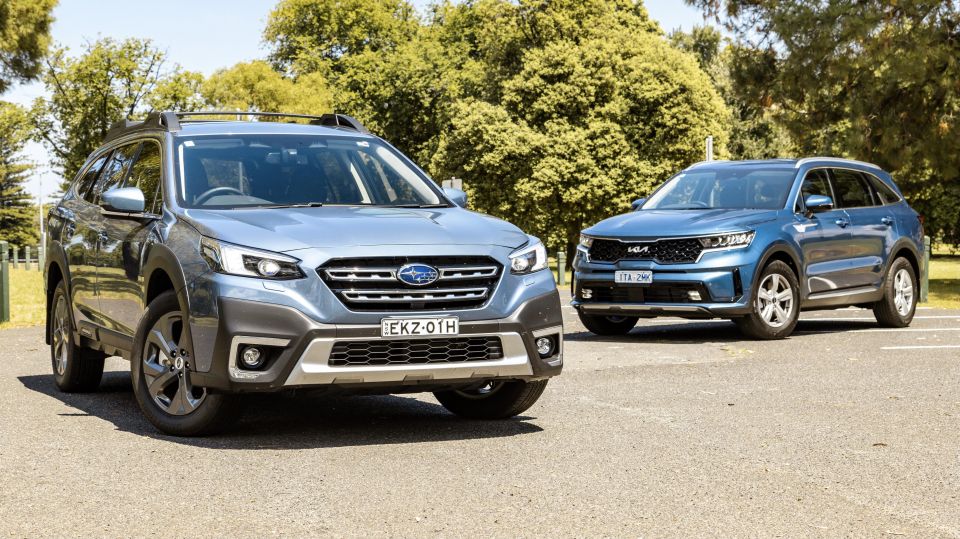

Senior Contributor
The new-generation Kia Sorento and Subaru Outback are both classified as large SUVs, but they go about their tasks in different ways.
The Kia’s attributes include a kid-friendly third seating row and more traditional SUV stance, whereas the Subaru offers standard all-wheel drive and a more car-like, ‘crossover’ configuration. It’s a jacked-up wagon with cladding.
Yet for all that, in many key metrics – price, equipment, dimensions, safety attributes, servicing costs – they’re actually fairly close, and make for interesting competitors.
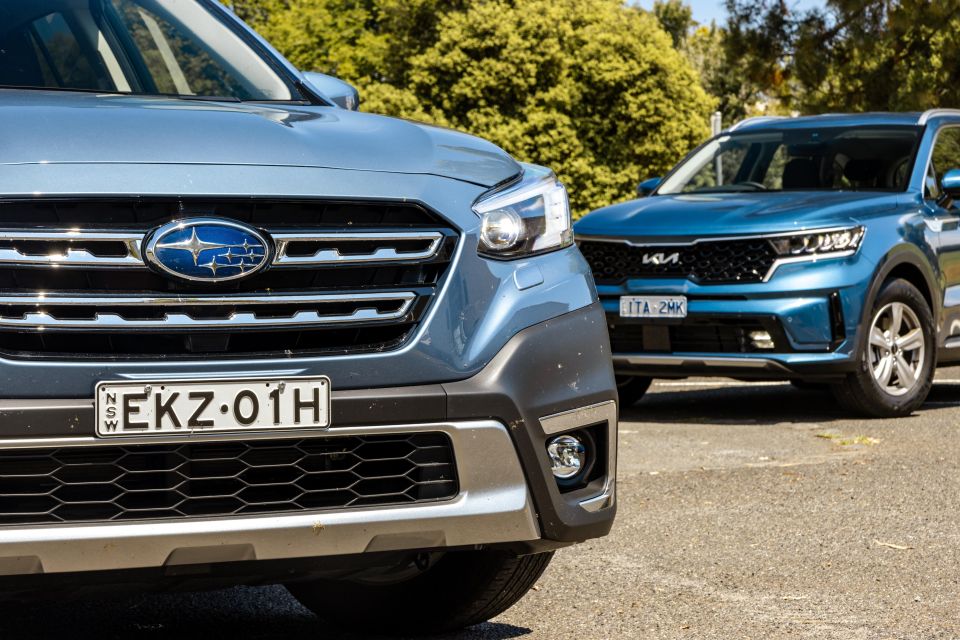
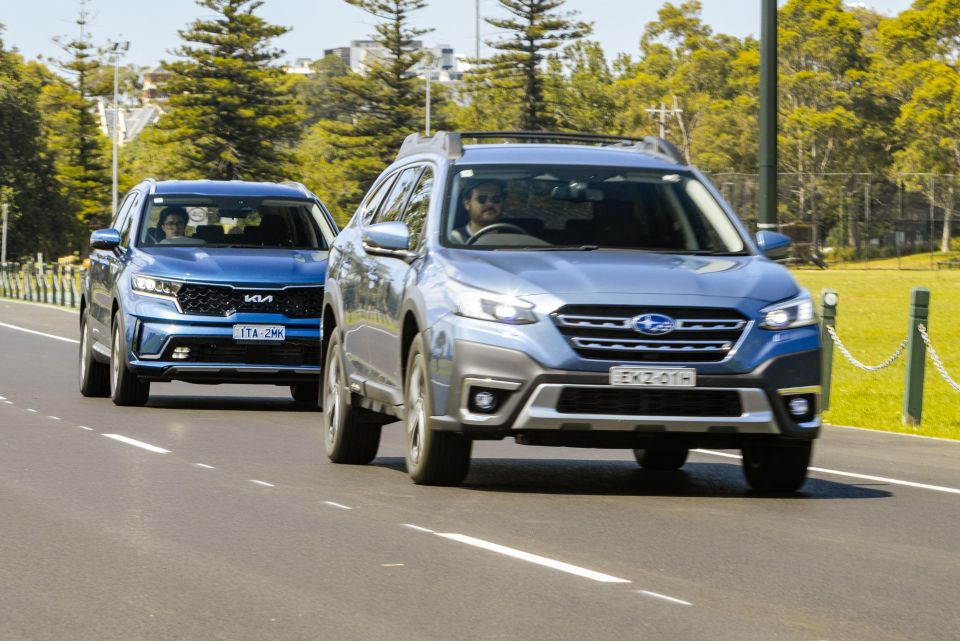
With value-conscious families in mind, we’re testing both vehicles in their cheapest incarnations, meaning it’s the eponymous Outback AWD variant versus the Sorento S grade. We also just happened to have this pair on loan at the same time…
Their entry prices mean they forego some of the more high-tech and wow-inducting functions found on their more expensive brethren. But for many more sensible buyers, simple yet safe transport is the order of the day.
This also means we need not spend too much time dwelling on the stock shortages that appear to be particularly affecting higher-grade Sorentos, too.
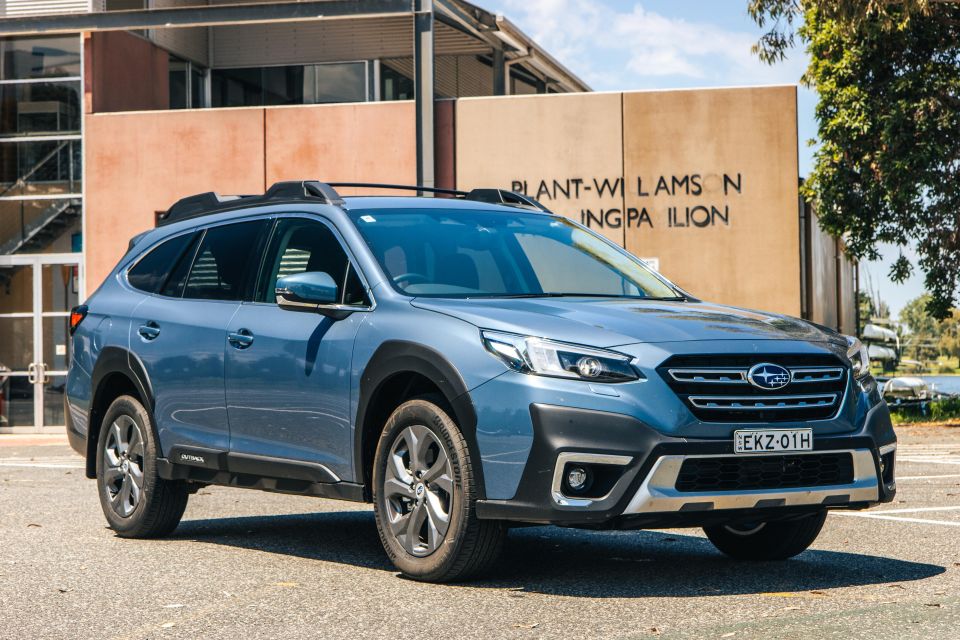
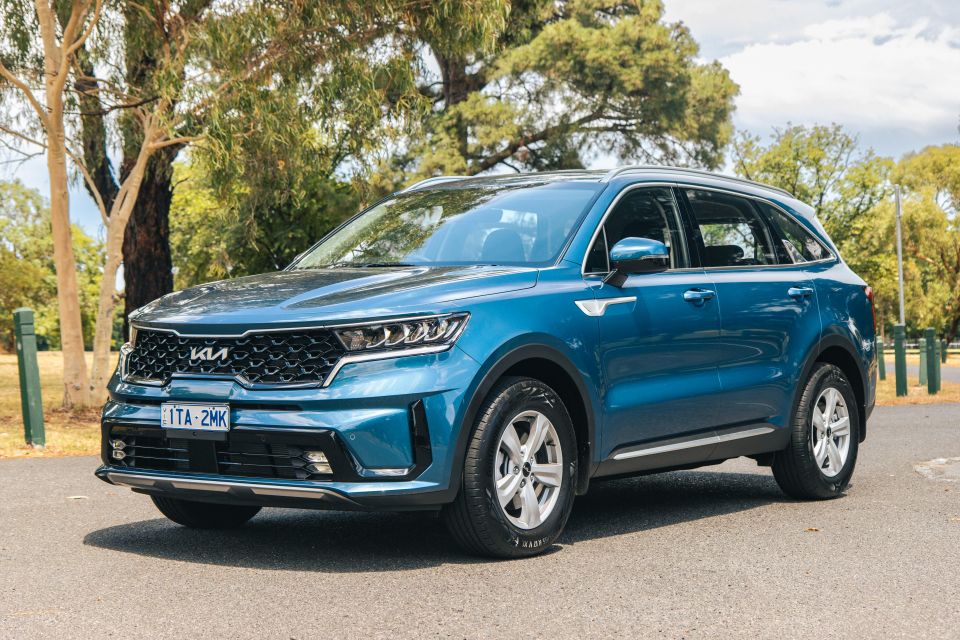
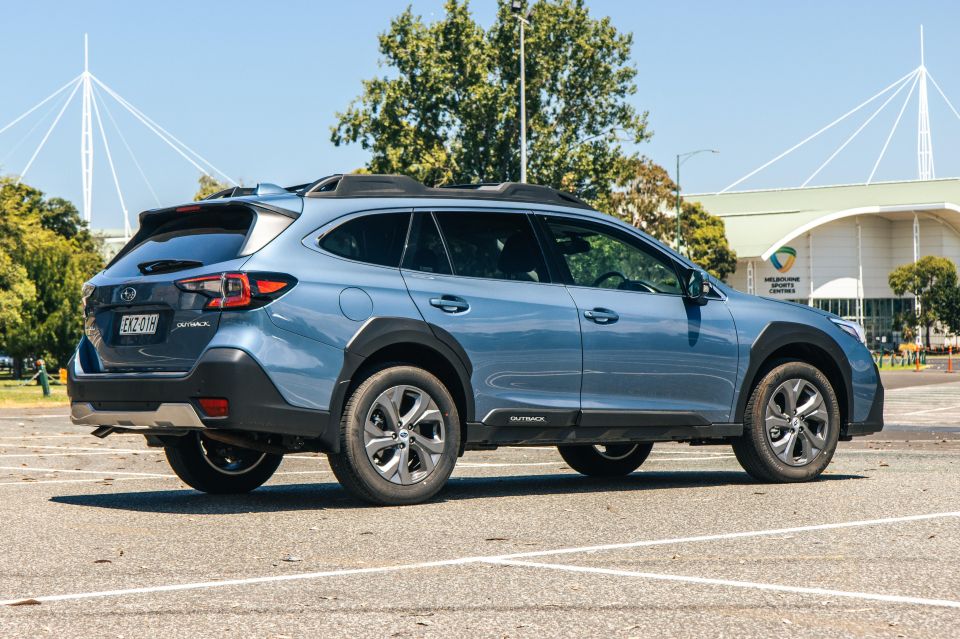
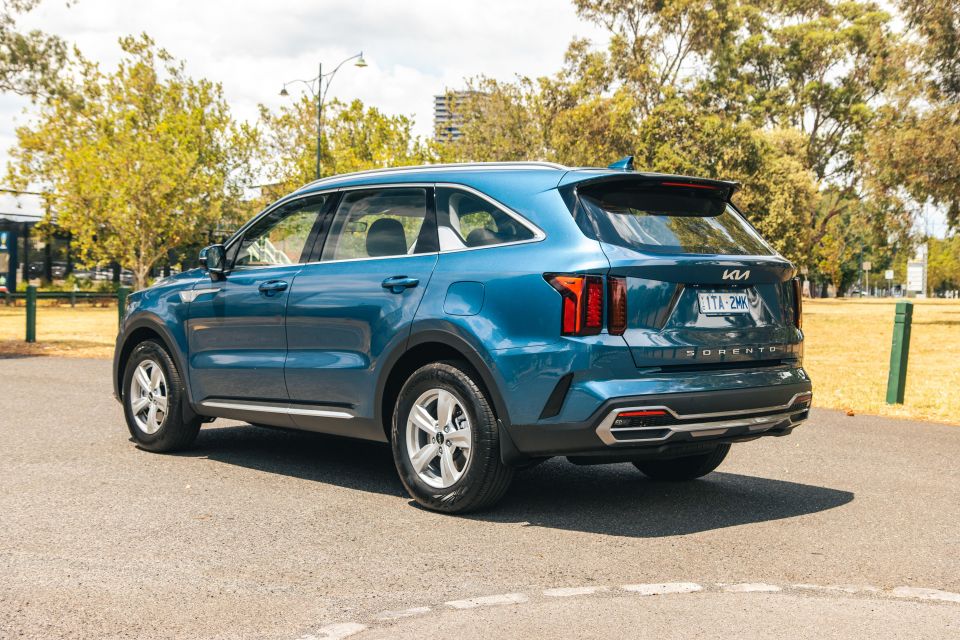
Both of these base grades are the cheapest within their respective line-ups, forgoing many of the luxuries found in more premium variants.
The Kia Sorento S wears a RRP of $47,650 excluding on-road costs (state taxes and dealer charges) against the Subaru Outback’s $40,690 RRP.
But using the pricing calculator on each brand’s website, the Sorento costs $50,790 drive-away and the Subaru $45,519 drive-away – using a Victorian postcode for both. The gap narrows…
Perhaps budget around $50k and in the case of the Subaru, treat yourself to some off-road and road-trip-ready accessories?

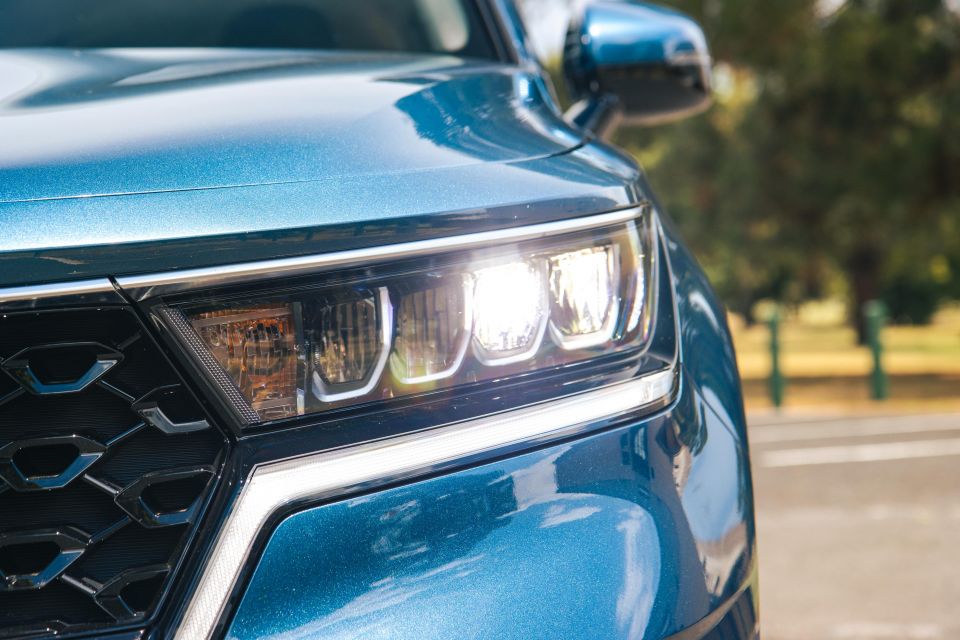

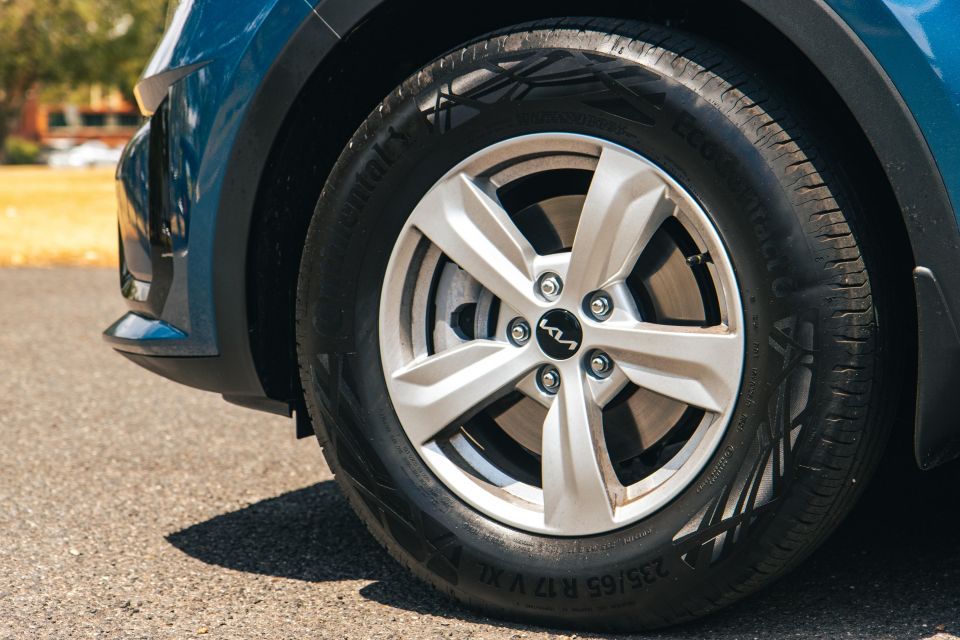
Neither is brimming with luxury features, but neither misses out on the fundamentals.
That means alloy wheels with plenty of tyre sidewall, full-size spares, LED daytime lights and headlights, front and rear parking sensors, reversing cameras, roof rails, cloth seats, touchscreens, Apple CarPlay and Android Auto, and Bluetooth/USB inputs.
The Subaru offers more features for less money though, adding fold-away roof crossbars, rear darkened privacy glass, button start (rather than a twist key), powered front seats, and dual-zone climate control rather than manual A/C. The Outback also has a bigger touchscreen.
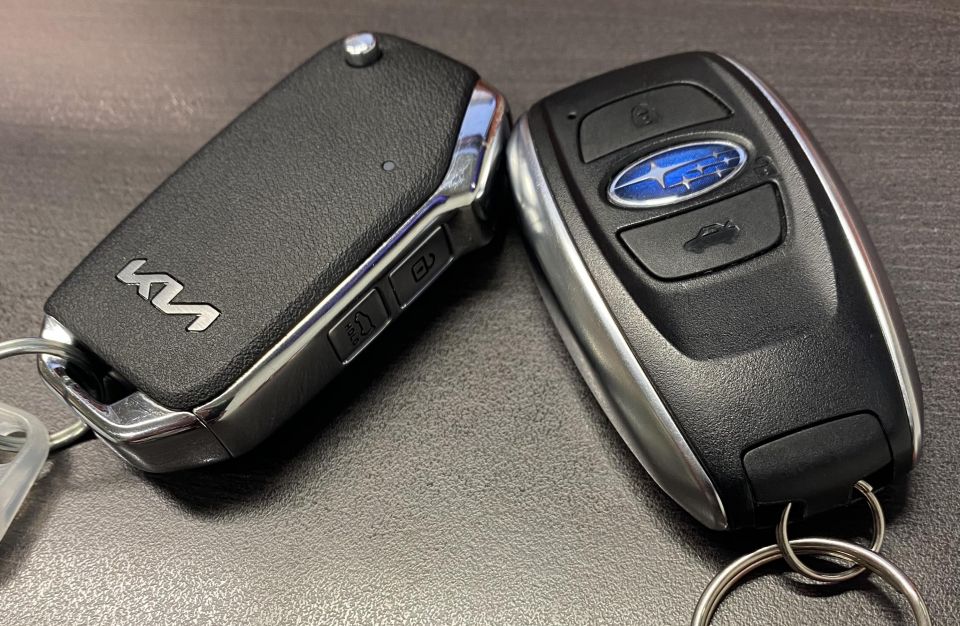
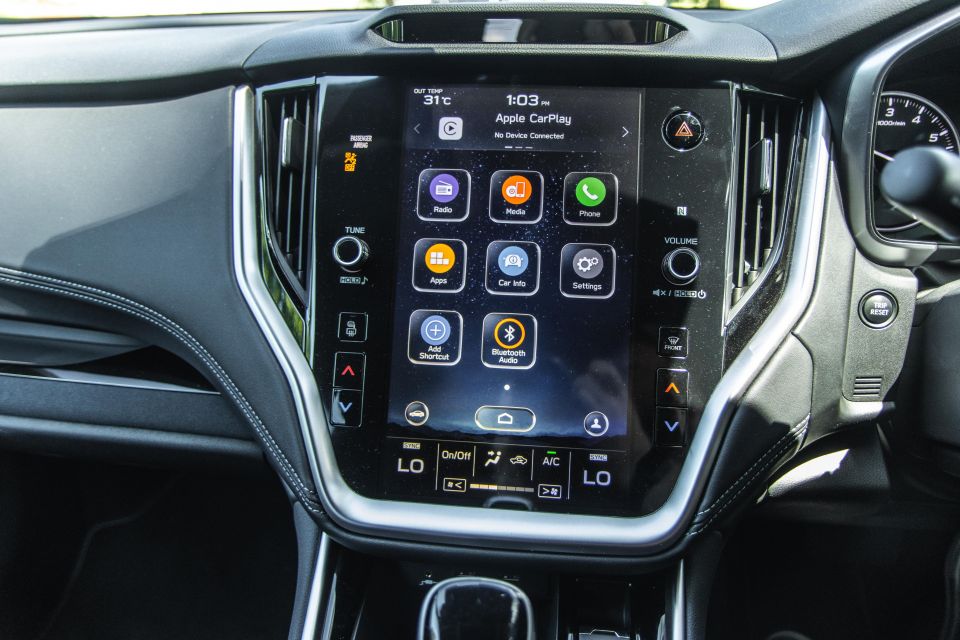
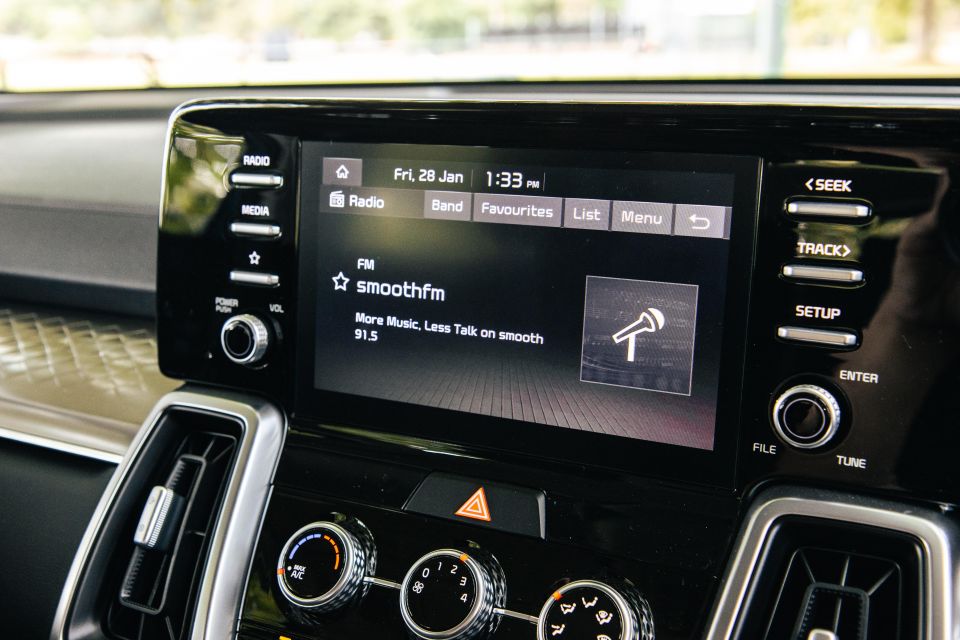
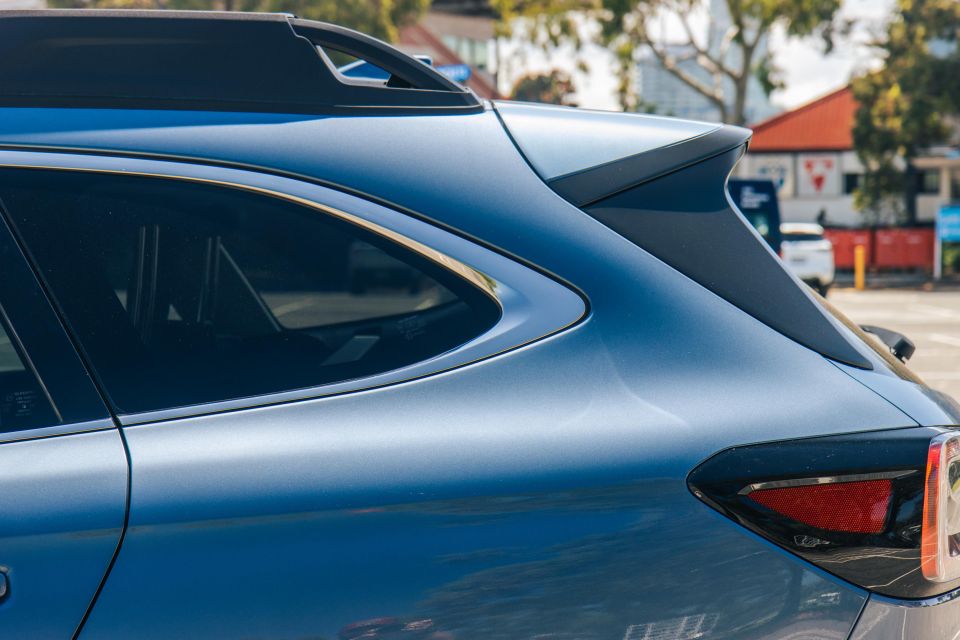
| Kia Sorento S | Subaru Outback AWD | |
|---|---|---|
| Wheels | 17-inch | 18-inch |
| Tyres | 235/65 R17 Continental | 225/60 R18 Bridgestone |
| Spare wheel | Full-size | Full-size |
| Headlights | LED with dusk sensors | LED with dusk sensors |
| Daytime running lights | LED | LED |
| Tailgate operation | Manual | Manual |
| Parking sensors | Front and rear | Front and rear |
| Roof rails | Standard | Standard with cross bars |
| Rear privacy glass | No | Standard |
| Entry and start | Press fob button, turn key | Smart key, button start |
| Kia Sorento S | Subaru Outback AWD | |
| Seats | Cloth, manual adjustments | Cloth, powered for driver and passenger |
| Driver’s instruments | Analogue, 4.2-inch digital in centre | Analogue, 4.2-inch digital in centre |
| Touchscreen | 8.0-inch landscape | 11.6-inch portrait |
| Parking camera | Reverse view | Reverse view |
| Speakers | 6 | 6 |
| 12V outlets | 2 | 2 |
| USB outlets | Front and rear (4) | Front and rear (4) |
| Digital radio | Standard | Standard |
| Apple CarPlay | Standard | Standard |
| Android Auto | Standard | Standard |
| Satellite-navigation | No | No |
| Air-conditioner | Manual AC, second-row vents | Dual-zone climate control, second-row vents |
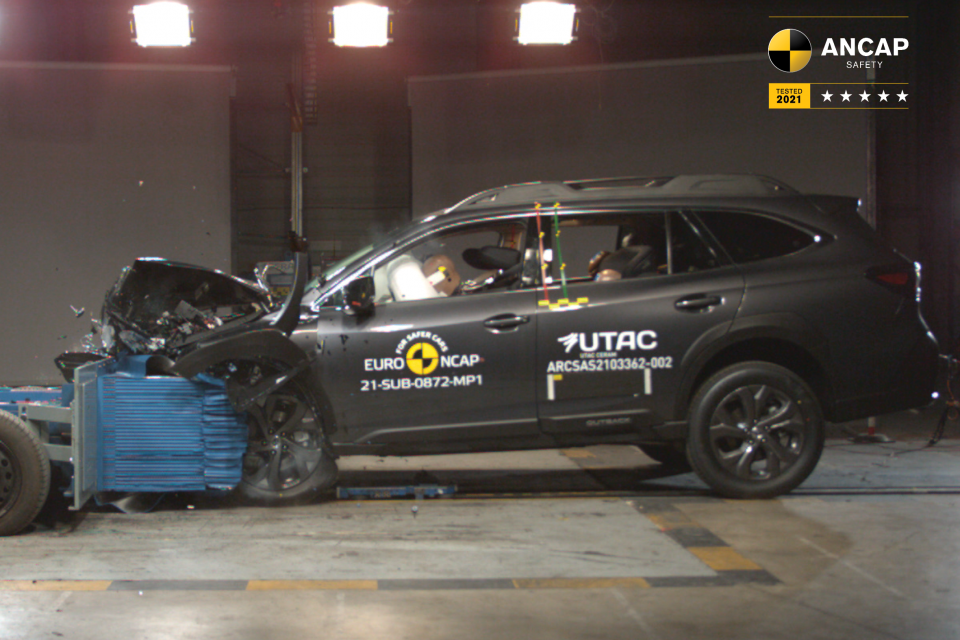
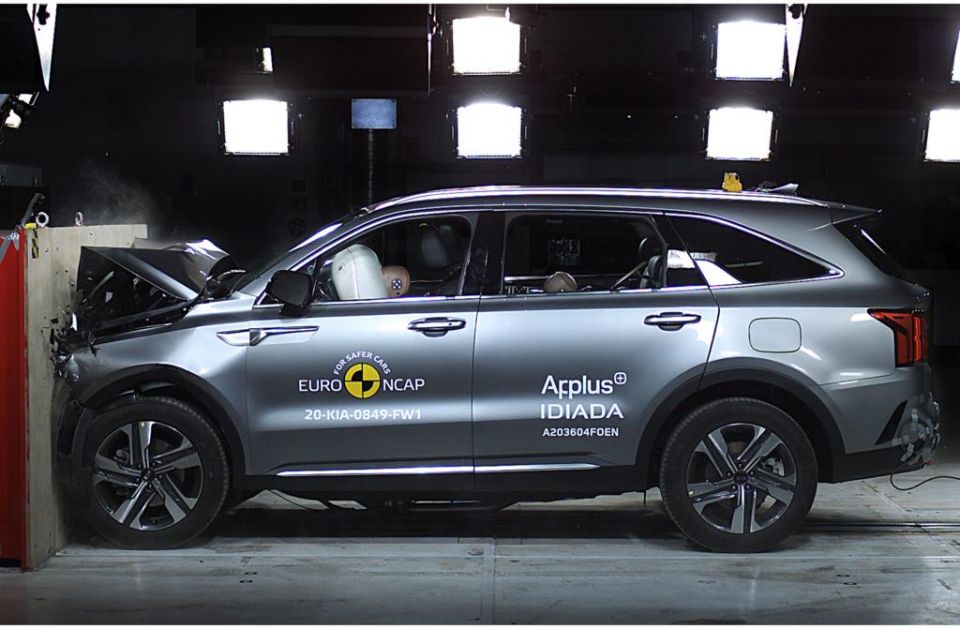
Both vehicles come with the maximum five-star ANCAP safety rating against the latest test procedures. The Kia has a 2020 date stamp and the Subaru 2021, on account of their respective launch timings.
That being said, as the table below shows, the Subaru performed better in all four sections, and right now appears to be among the safest cars money can buy.
| Test sequence | Kia Sorento | Subaru Outback |
|---|---|---|
| Adult occupant | 82% | 88% |
| Child occupant | 85% | 91% |
| Vulnerable road user | 63% | 84% |
| Safety assist | 89% | 96% |
Both offer dual front airbags, dual front-side airbags, and two-row curtain airbags. The Outback has a driver’s knee bag whereas the Sorento has a front-centre bag. Both offer ISOFIX and top-tethers attachment points, more in the Kia given its third row.
Both offer AEB designed to also detect more vulnerable road users, blind-spot monitoring lights, lane-keeping aids with steering corrections, adaptive cruise control, driver monitoring systems (the Subaru’s links to your AC presets too), and multi-impact auto braking.
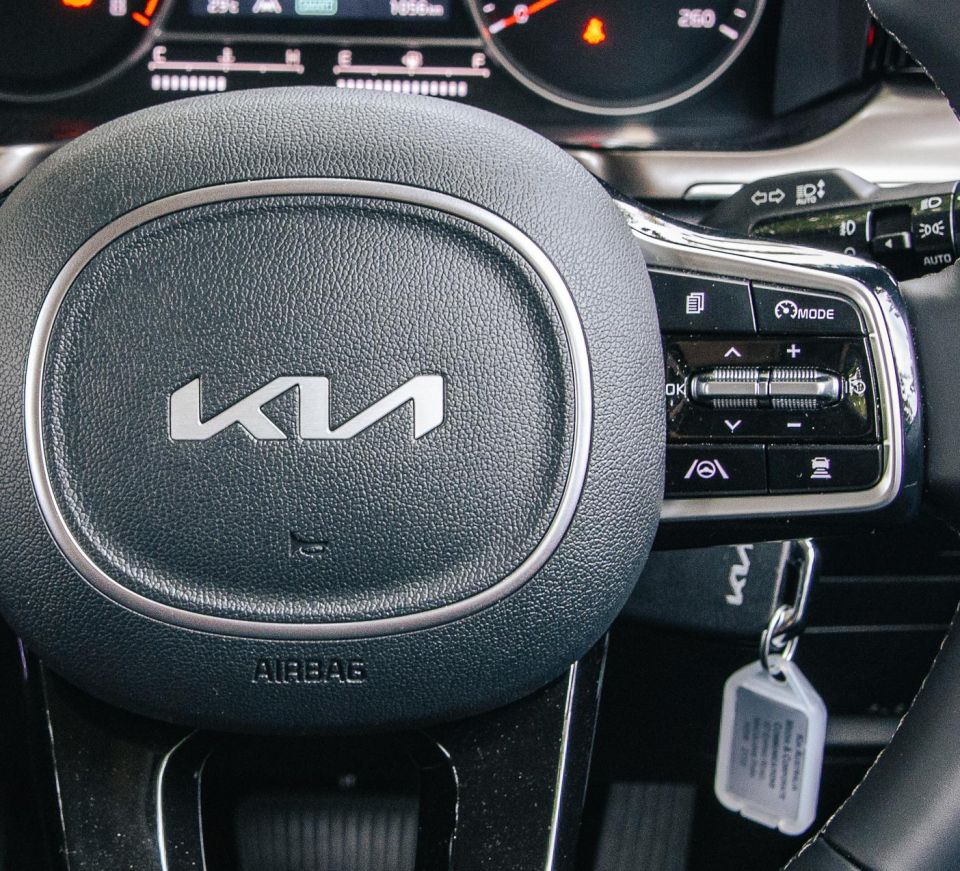
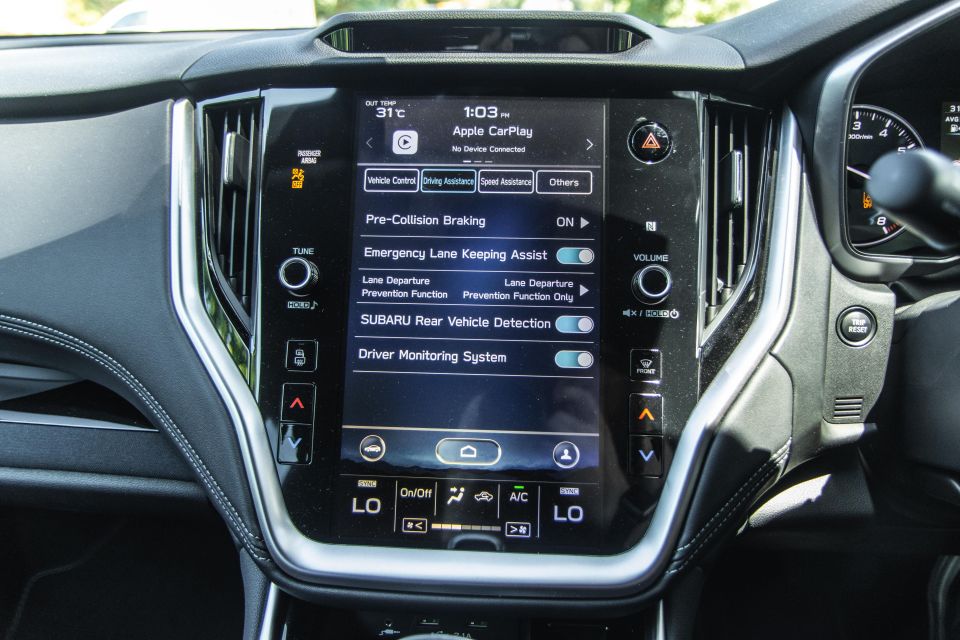
Kia adds a cool Safe Exit Alert system that prevents rear occupants from opening a door into passing traffic, while the Subaru has speed-sign recognition that alerts you to the speed limiter setting, and tells you when the vehicle ahead in traffic departs.
Both vehicles proved adept on longer drives at nudging the vehicle between road lines, matching the speed of the vehicle ahead, and keeping you aware of blind-spot obstacles.
The Subaru’s system made more chirps and beeps, eg. every time the active cruise ‘locks on’ to a vehicle ahead, though, meaning it lacks subtlety.
The Outback did better in its ANCAP testing, but we’d feel safe in either car. Note, the Kia’s curtain airbags do not entirely cover the third row occupants, which is disappointing (though Kia is no orphan among seven-seat SUV makers in this).
| Kia Sorento S | Subaru Outback AWD | |
|---|---|---|
| Airbags | Front, front-side, two-row curtains, front-centre | Front, front-side, two-row curtains, driver’s knee, front passenger seat cushion |
| Child seat attachments | 5 x top tether, 4 x ISOFIX | 3 x top tether, 2 x ISOFIX |
| Autonomous emergency | Cars and vulnerable road users | Cars and vulnerable road users |
| Lane-keeping aids | Active, steering | Active, steering |
| Blind-spot monitoring | Standard | Standard |
| Rear cross-traffic alert | Active | Active |
| Drowzy driver monitor | Standard | Standard |
| Adaptive cruise control | Standard | Standard |
| Speed limiter | Manual | Auto |
| Leading vehicle start alert | No | Standard |
| Multi-impact braking | Standard | Standard |
| Safe Exit Assist | Standard | No |
| Sign recognition | No | Standard |
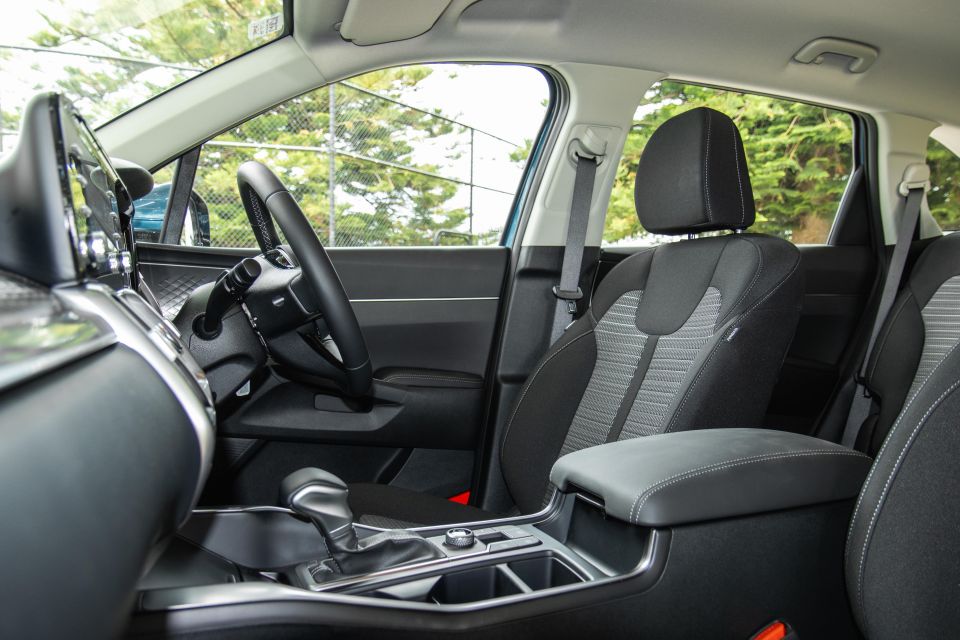

Kia
The Sorento immediately feels like the entry model because you need to push a key fob button to unlock it, twist said key in the barrel to start, and adjust your seat manually.
But you get a commanding driver position, plentiful seat and wheel adjustability for most body sizes, and an interior that overall looks very elegant and user-friendly – albeit with over-reliance on piano black trim, a magnet for sun glare and scratches.
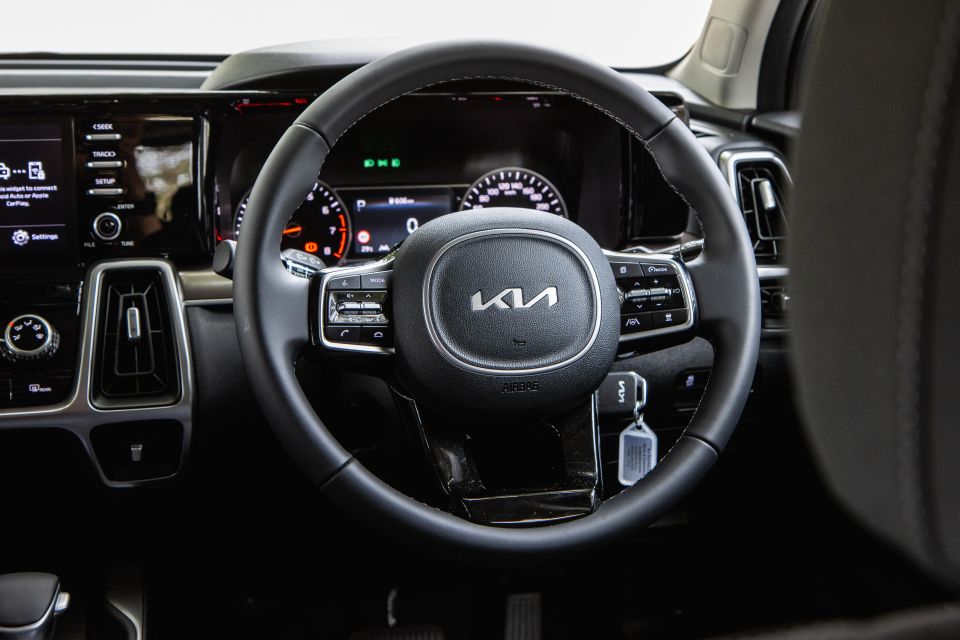
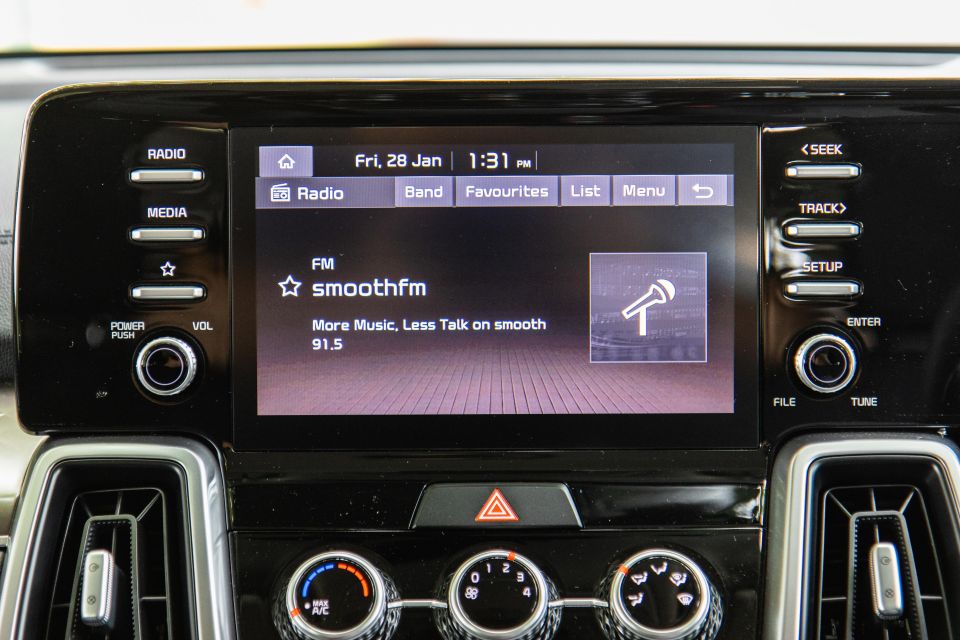

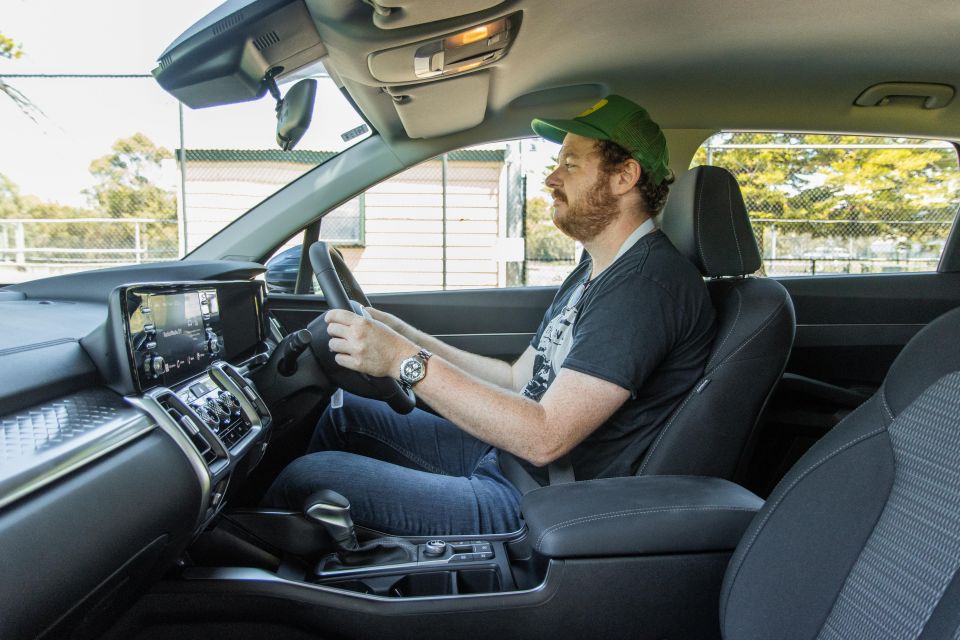
The wheel is finished in leather with stitching, and the buttons on each spoke (audio and phone on the left, cruise control and trip computer menus the right) are easy to figure out.
The red-on-white-on-black analogue gauges flanking a small, sharp digital display with speedo and trip data does the job, and neatly blends into the centre fascia, which in turn houses a horizontal touchscreen with shortcut buttons and dials.
Other Sorentos get a 10.25-inch screen with navigation, but this base S grade makes do with an 8.0-inch screen, phone mirroring for maps, and fewer menus. It all worked well enough, with no Bluetooth or USB dropouts and good sound quality, but it does appear a bit small.
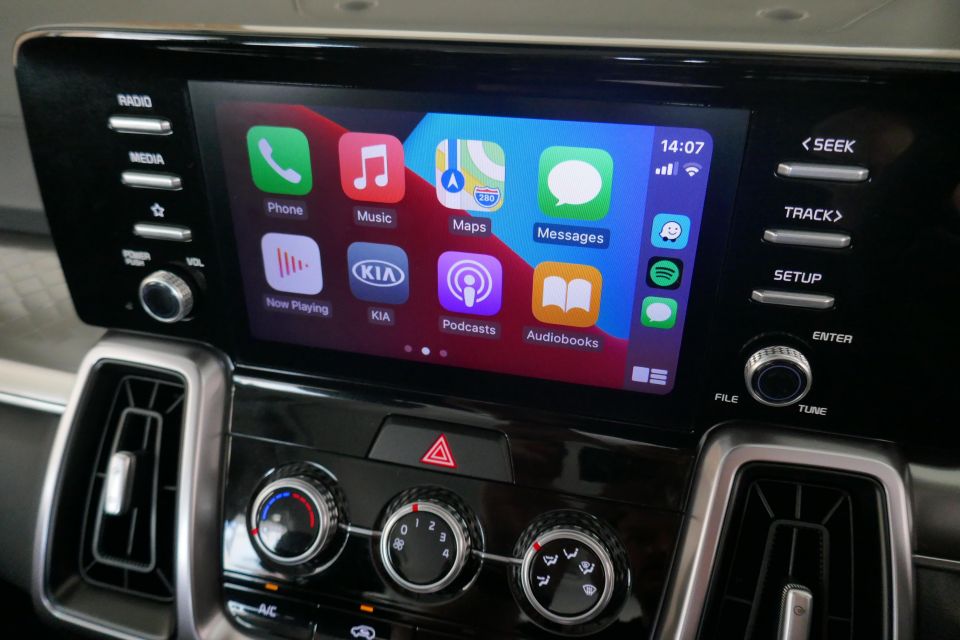

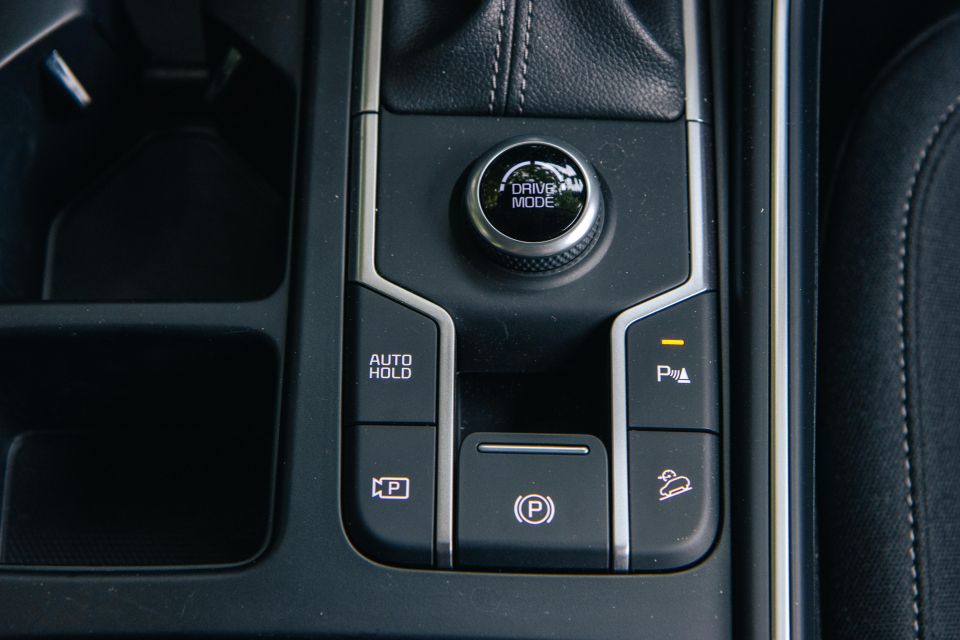
If you’re like me you’ll run Apple CarPlay or Android Auto most of the time, and thereby get good voice control, live maps, and better audio interfaces.
There’s manually adjustable A/C controlled by three rotary dials and a few buttons for recirculation and windscreen operation. The vents offer good adjustment and seem sturdily made, and add a hint of design nous alongside the flash, patterned dash inlays.
The gear shifter is trimmed in the same leather as the wheel and feels very sturdy, and sits alongside damped buttons (not screen menus as per the Outback) to control the electric park brake, Auto Hold function, rear camera, downhill slip control, and parking sensors.

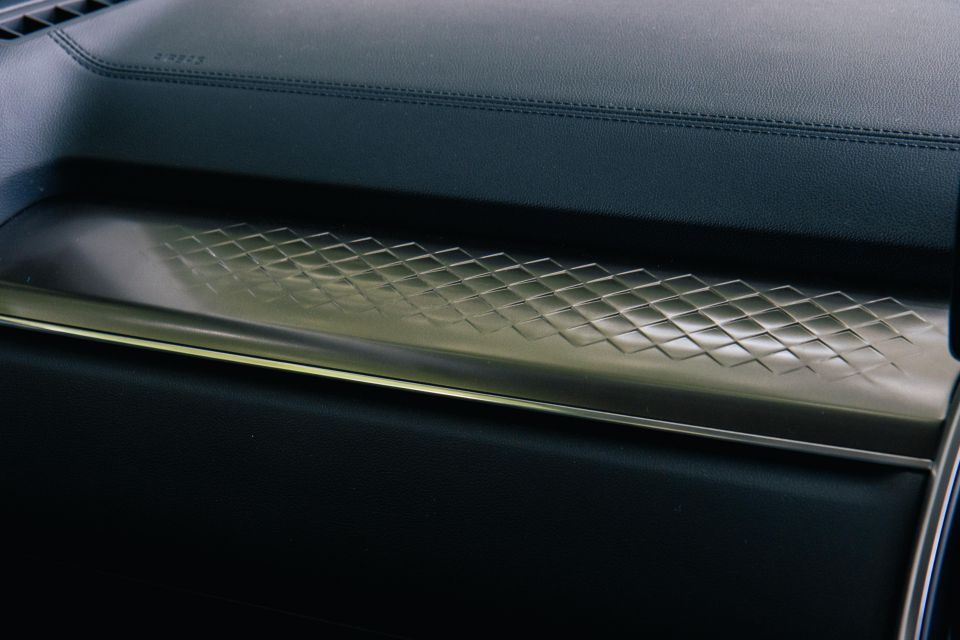
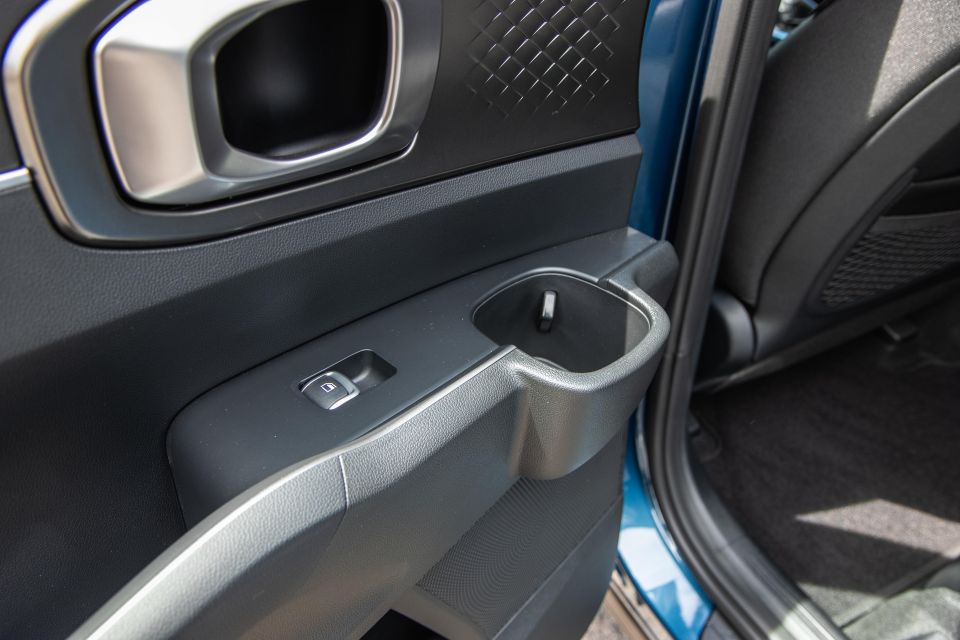
There is no shortage of storage, including a roomy centre console with a padded lid, toothed cup-holders along the centre tunnel, a large closing cubby below the AC controls, bottle bins in the doors, and a locking and illuminated glovebox.
It does the basics well, this Kia, with hardy cloth seats, quality key touchpoints, a simple but clean design, excellent build quality with no evident squeaks or rattles, and plenty of stowage options. It also feels very much the base model.
The back doors have padded armrests and numerous storage cubbies (plus prominent bottle holders mounted high up), while rear occupants have access to air vents behind the centre console, and single USB and 12V points.
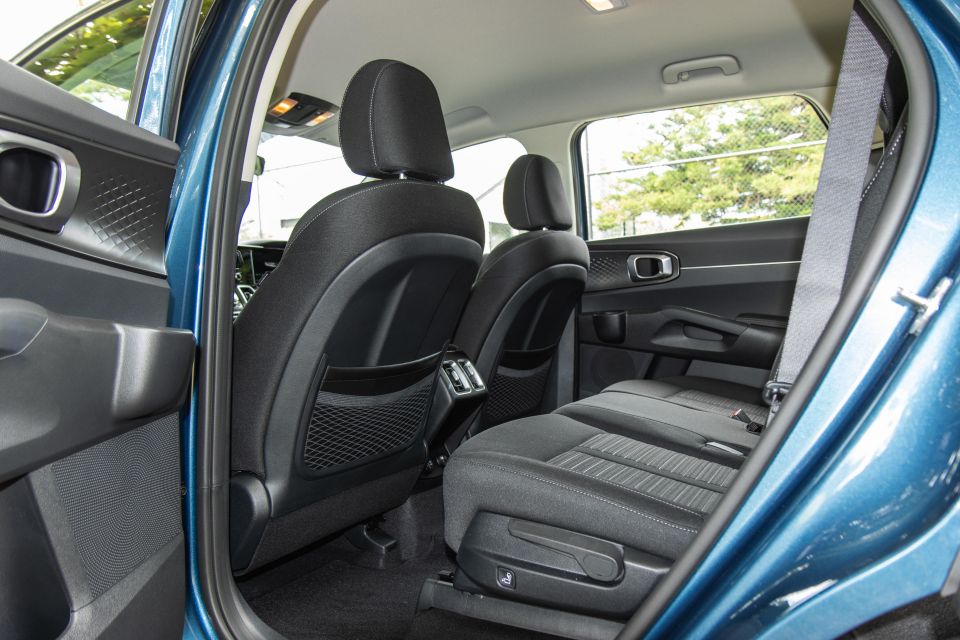
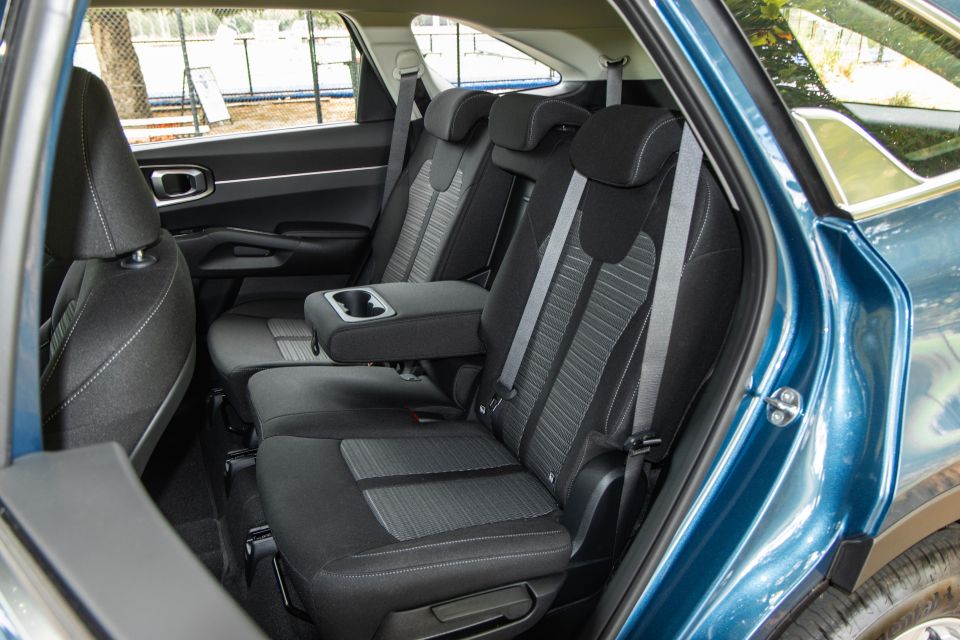
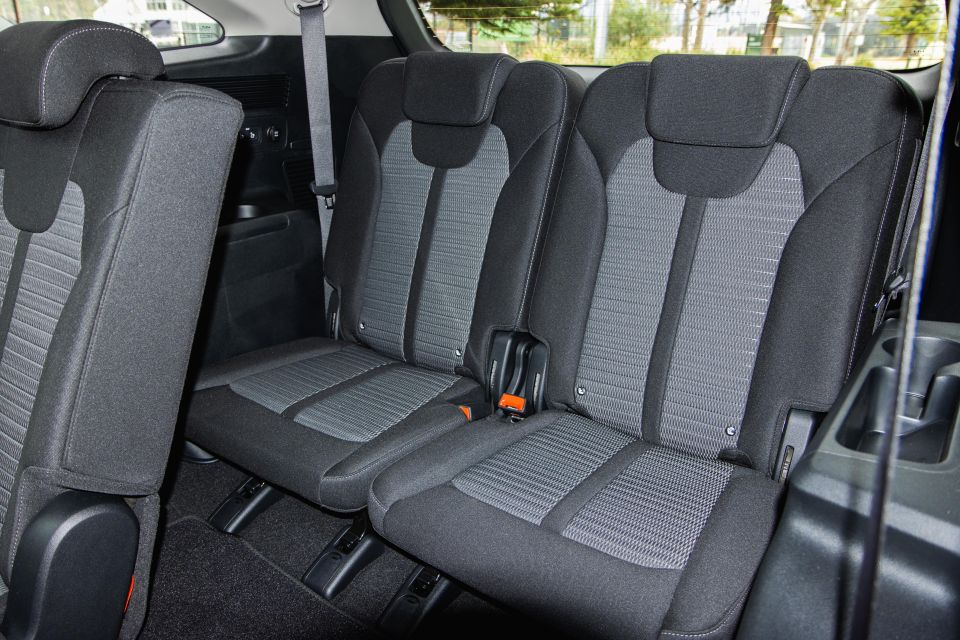
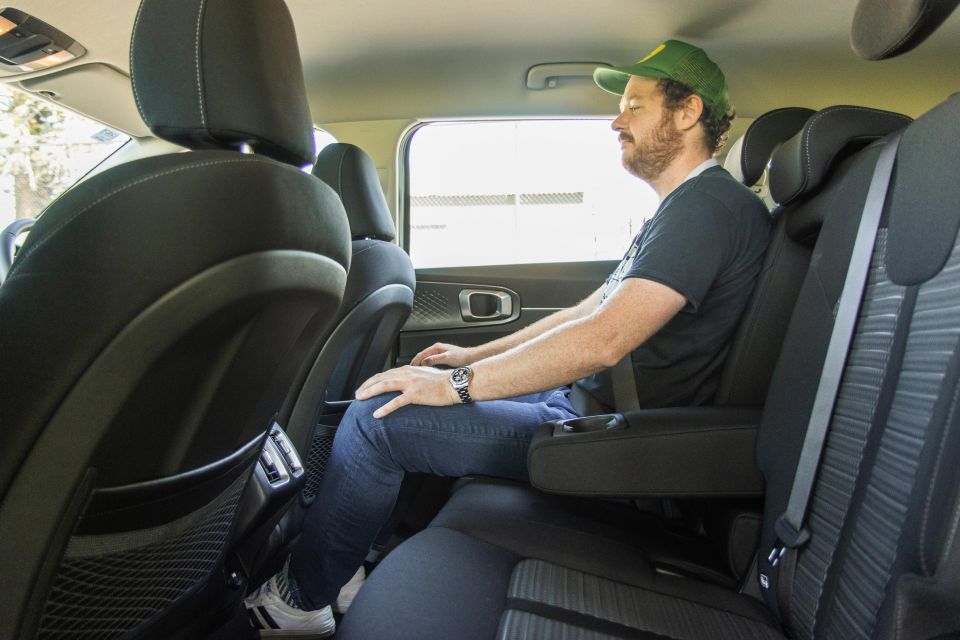
Both vehicles offered sufficient legroom, foot room, headroom and shoulder room for my 194cm frame, situated behind my ideal driving position. But the front seat-backs are trimmed in wipe-clean plastic and you enjoy a more elevated, commanding view of the world outside.
The middle seat row splits 60:40, with the smaller portion on the driver’s side, thereby meaning the larger entry aperture to the third row is via the kerbside. The middle seat row also slides fore and aft, and the backs recline a few degrees.
A single button on the kerbside middle-row seat base causes the 60 per cent portion to tilt forward and slide forward at once, to open up access to the rearmost seats. These are best saved for kids. Handy to have, but likely as backups.
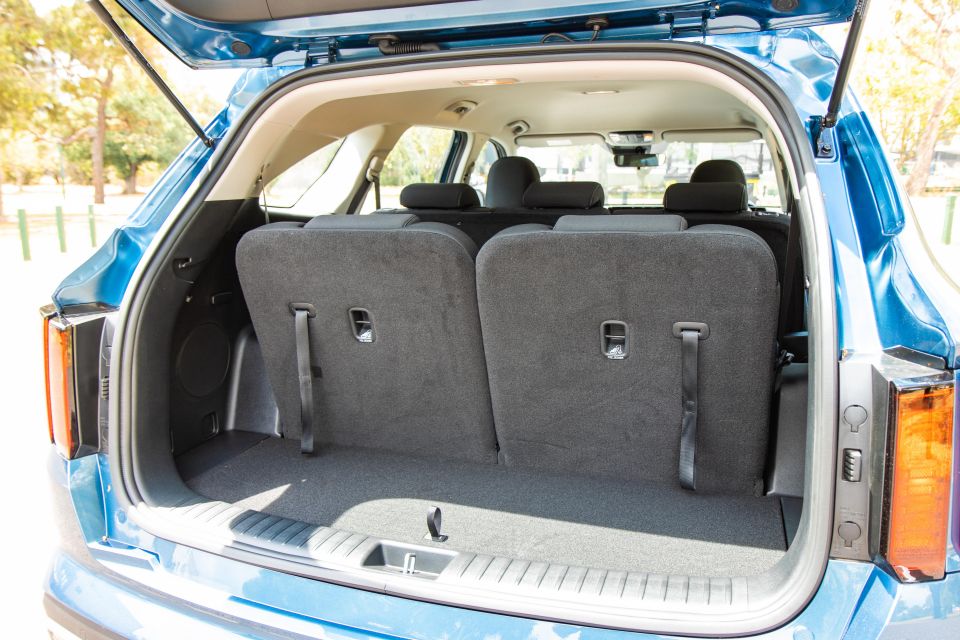
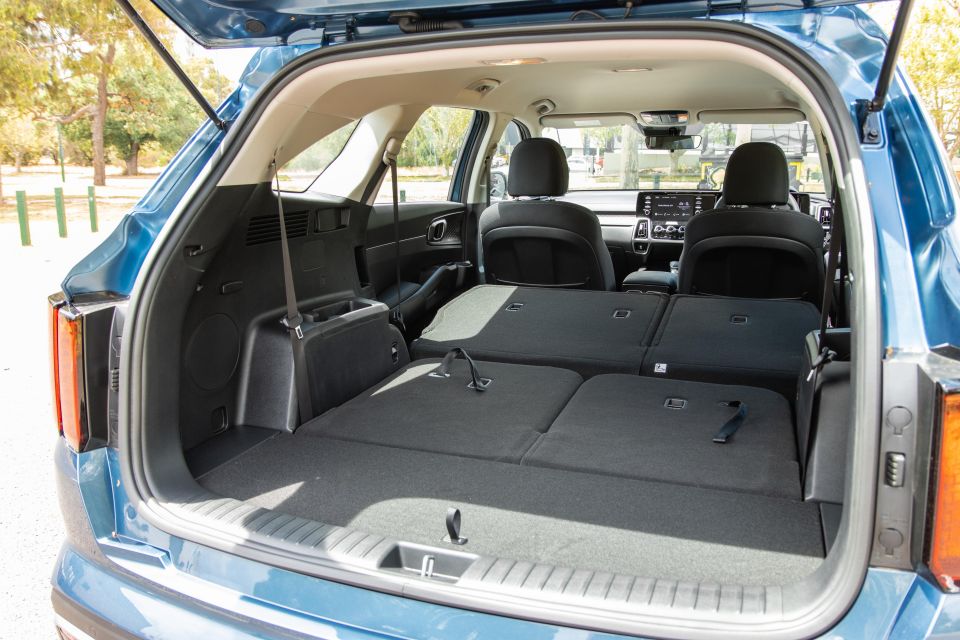

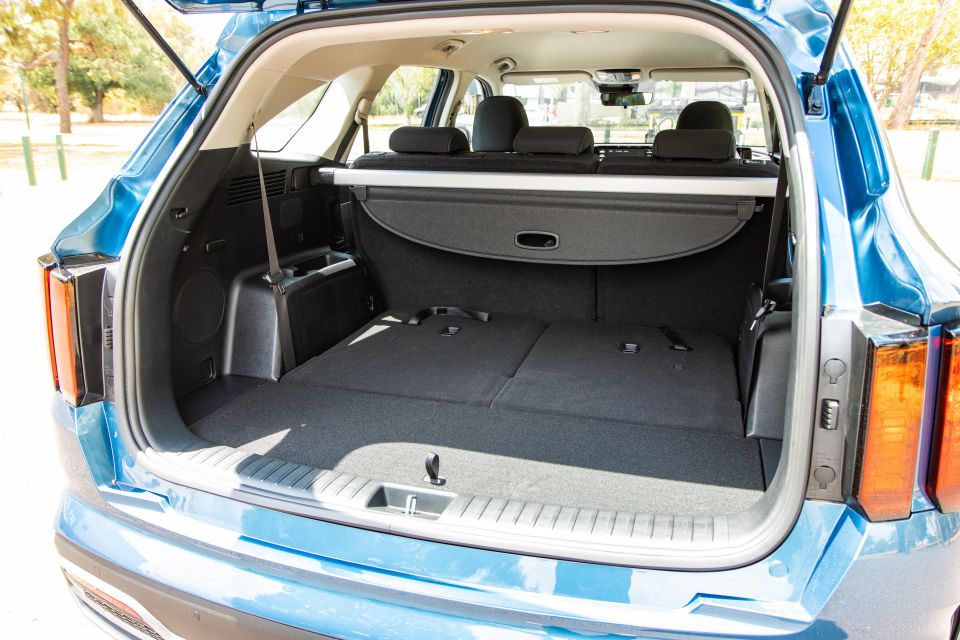
The boot design is clever, and 92 litres more capacious than the Subaru in default five-seater formation. The sixth and seventh seats fold flat, and there’s room beneath the floor to stow the rigid pull-out cargo cover, as well as the full-sized spare (outside).
There are buttons to flip down the middle seats from the cargo areas too, plus a 12V socket and bag hooks. The rearmost seatbelts are also hidden out of sight thanks to plastic clips.
For many people, the allure of an extra pair of seats and the subsequently more flexible middle row will be drawcards – despite being the shorter car here, the Kia is the more practical.
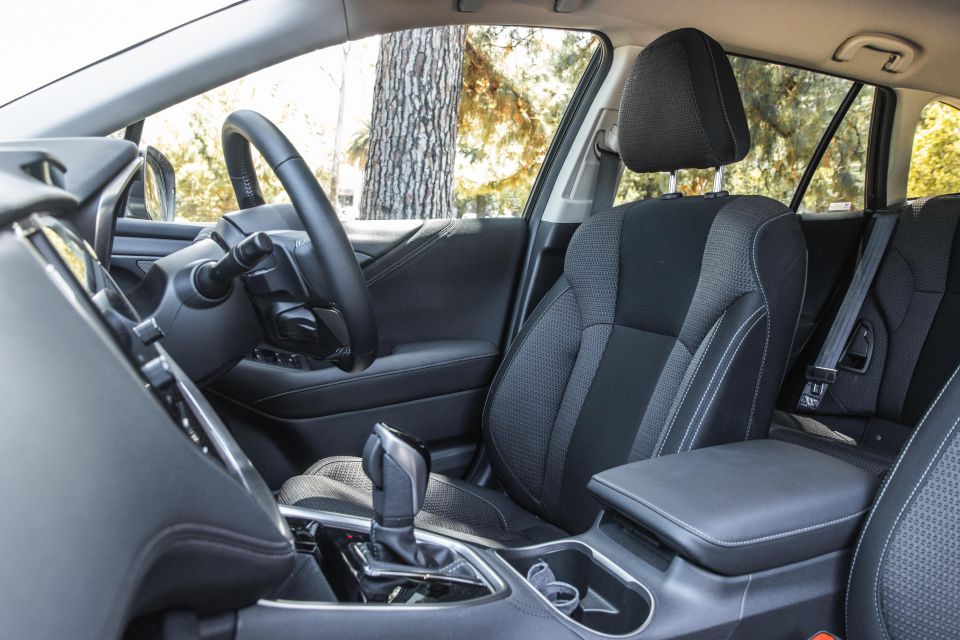
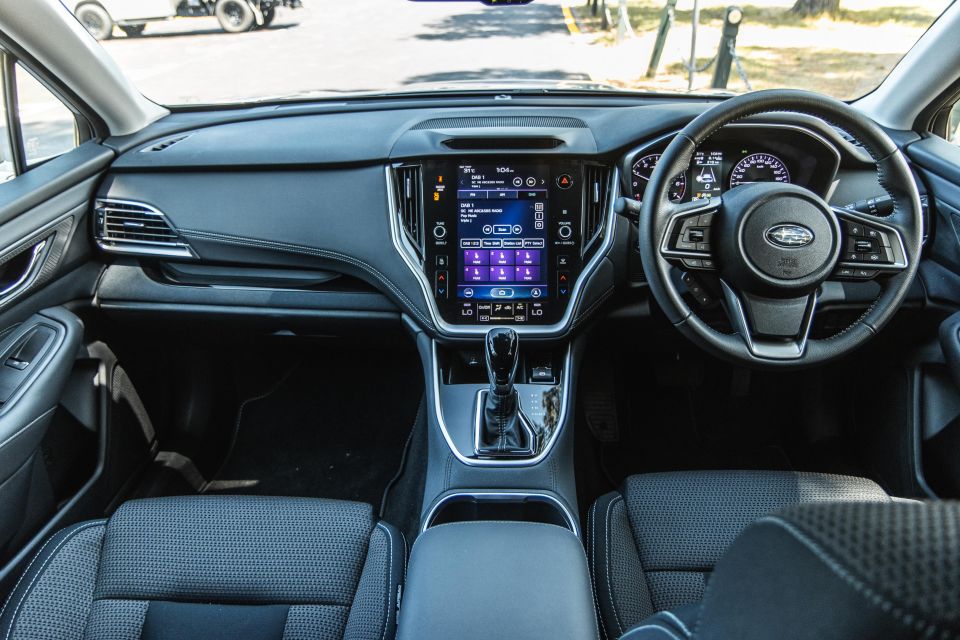
Where expert car reviews meet expert car buying – CarExpert gives you trusted advice, personalised service and real savings on your next new car.
Subaru
The Outback is a mere 25mm lower overall than the Sorento, but its superior ground clearance and more prominent roof rails (with clever foldaway bars that deploy into full roof racks rapidly) narrow the margin.
It therefore doesn’t feel quite as ‘airy’ or tall inside as the more SUV-like Kia, which shouldn’t be all that surprising.
But it does have a seating position that balances its SUV ride height with traditional wagon proportions, imparting what felt to me a more dynamic and sporty feel from behind the wheel. Those seats themselves look interesting too, with a neat mesh finish.
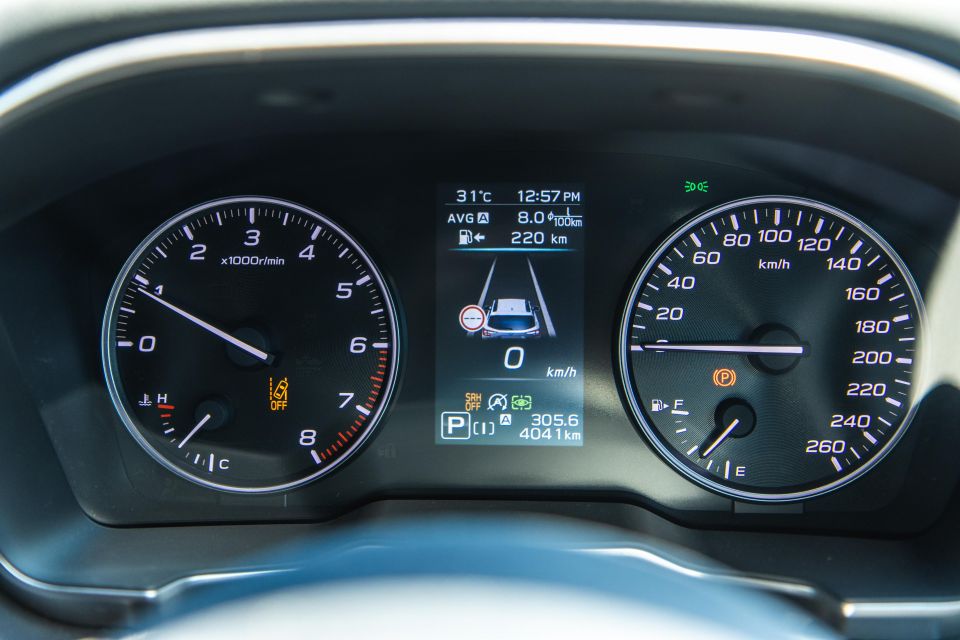

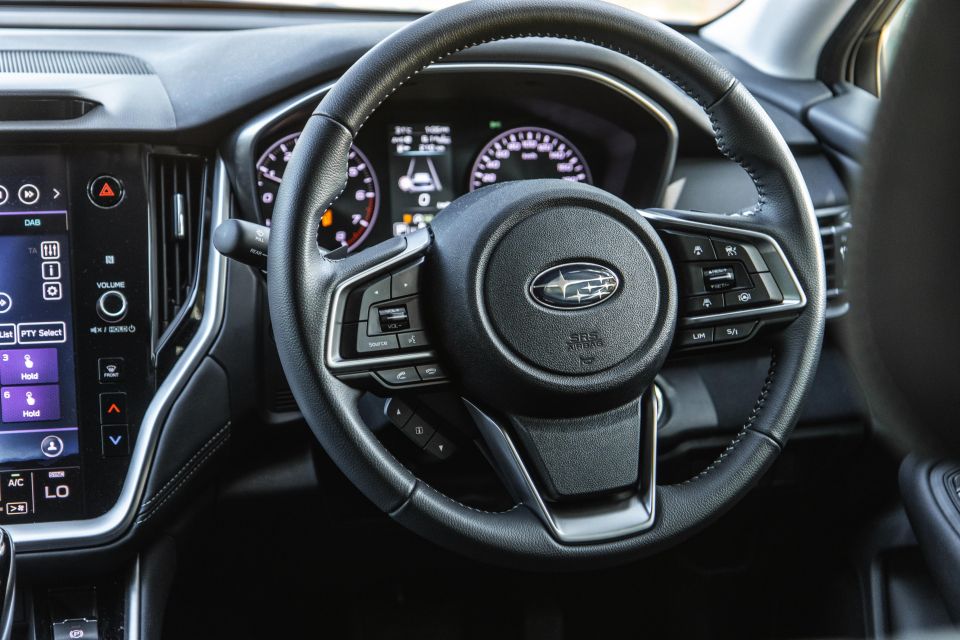
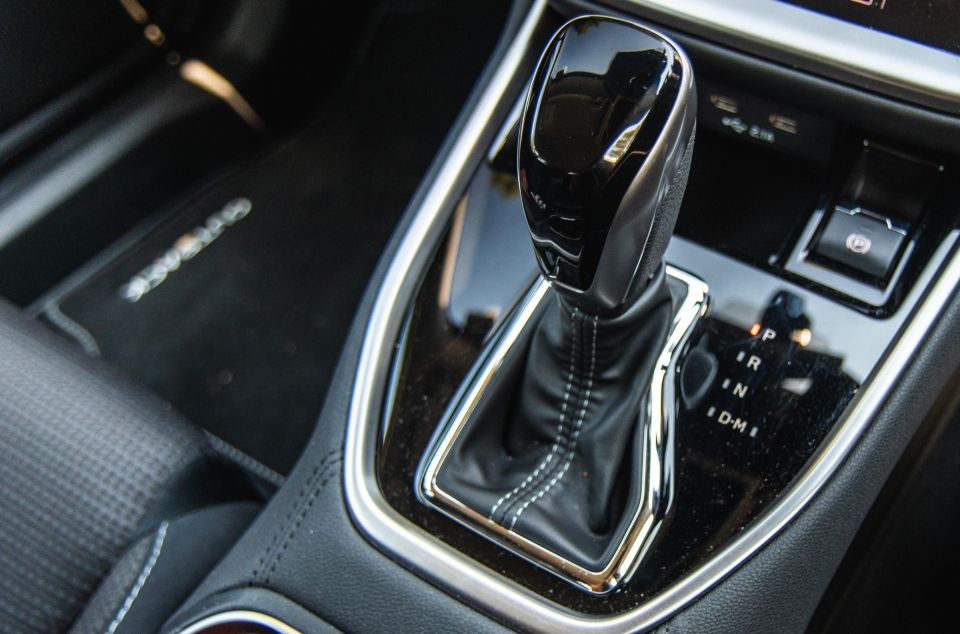
In typical Subaru fashion there’s a lot of information on tap – a few more buttons on the steering wheel, a busier trip computer readout – but with familiarisation I found everything to be logical. I also turned off as many beeps and chimes as possible, and they remained silent upon restart.
A few extra creature comforts such as powered front seats and button start make you feel a little better about selecting the base model, too. Like the Kia there’s an abundance of piano black, in this instance along the centre tunnel and gear shifter, but also nicer stitchwork.
In terms of overall layout I found the Kia more subtle and elegant, but the Outback offers more ‘wow’ factor – in no small part down to its much more impressive-looking centre display.
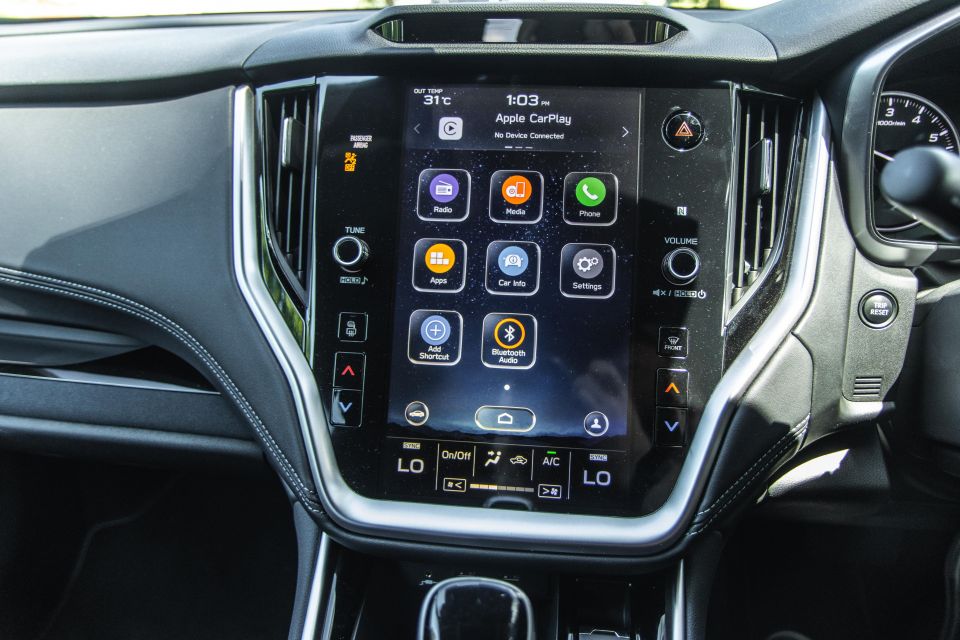
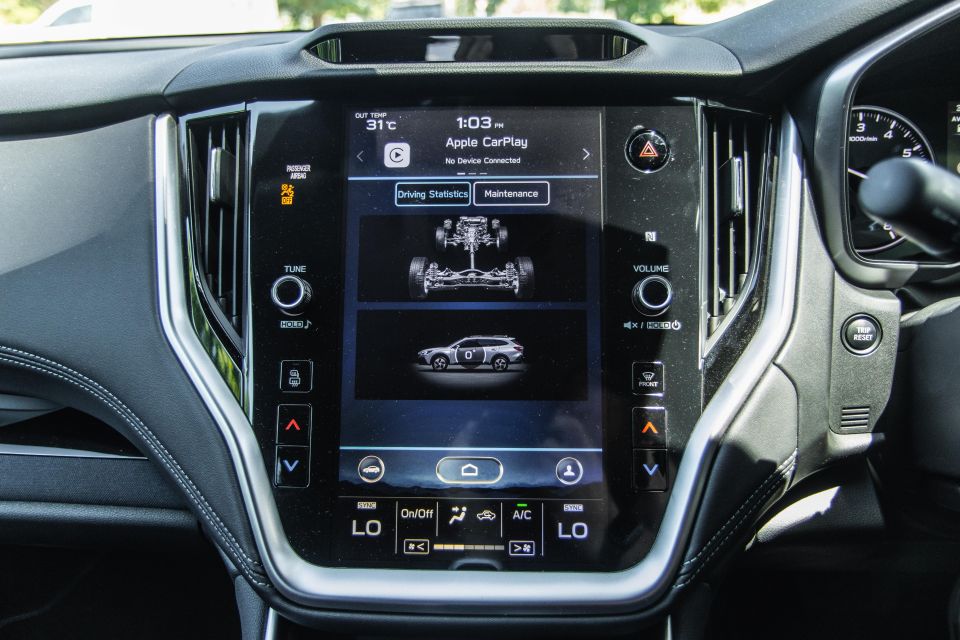
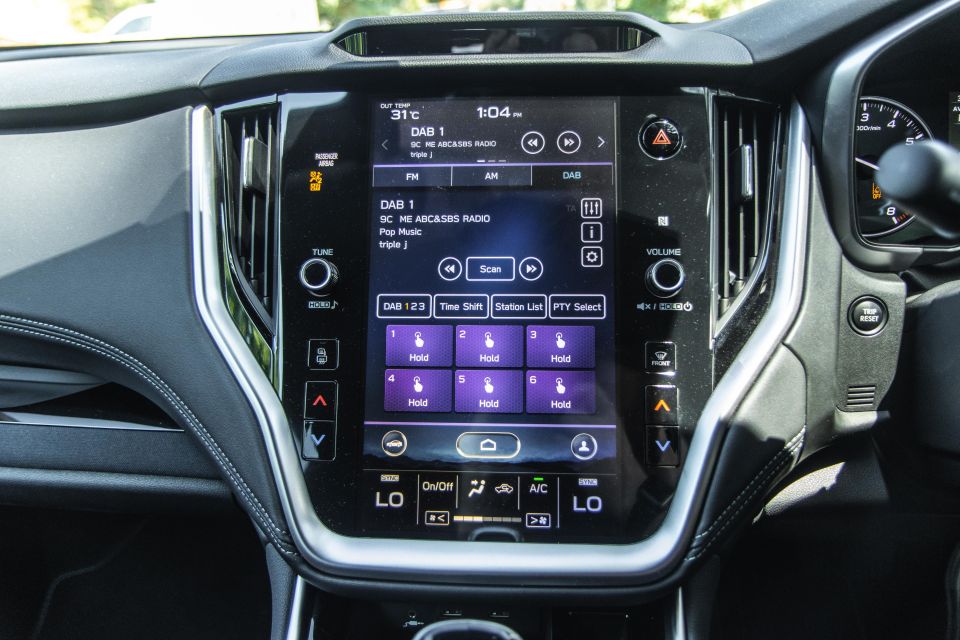
It’s larger and has some additional interesting menus and graphics to mess about with, and also uses a portrait orientation, which to me makes sense. Most other devices we are glued to are portrait, so it seems intuitive to consume information this way.
It doesn’t pinch and swipe as neatly as a tablet, or process with the same slickness, but most of its dropdowns or tiles are easy to access with a tap or two, and clustered into lists.
Likewise the digitised climate controls, which work better than most other similar setups I’ve tried. On the other hand, the reversing camera display is disappointingly small and could have better resolution.
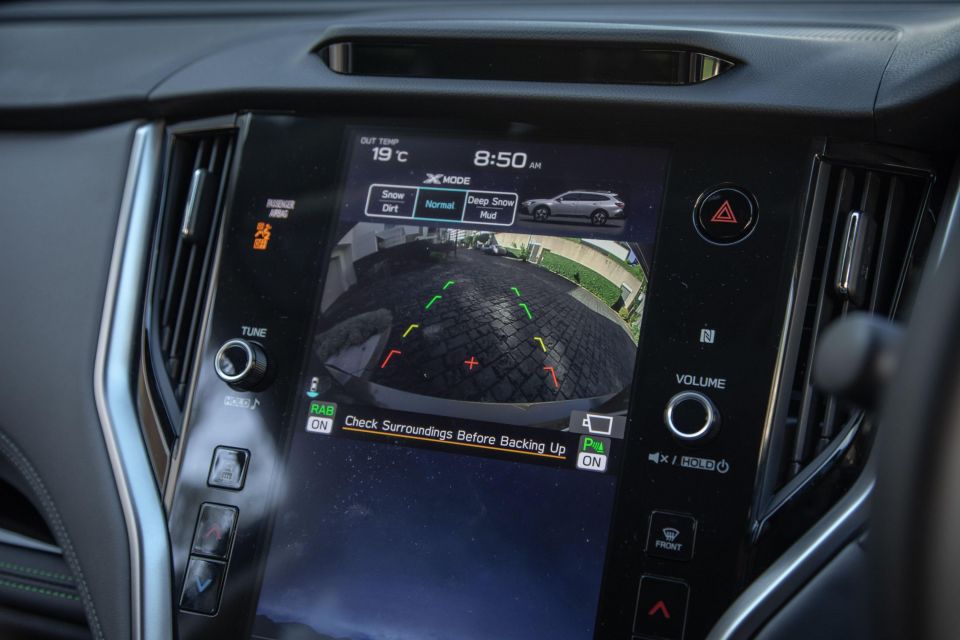
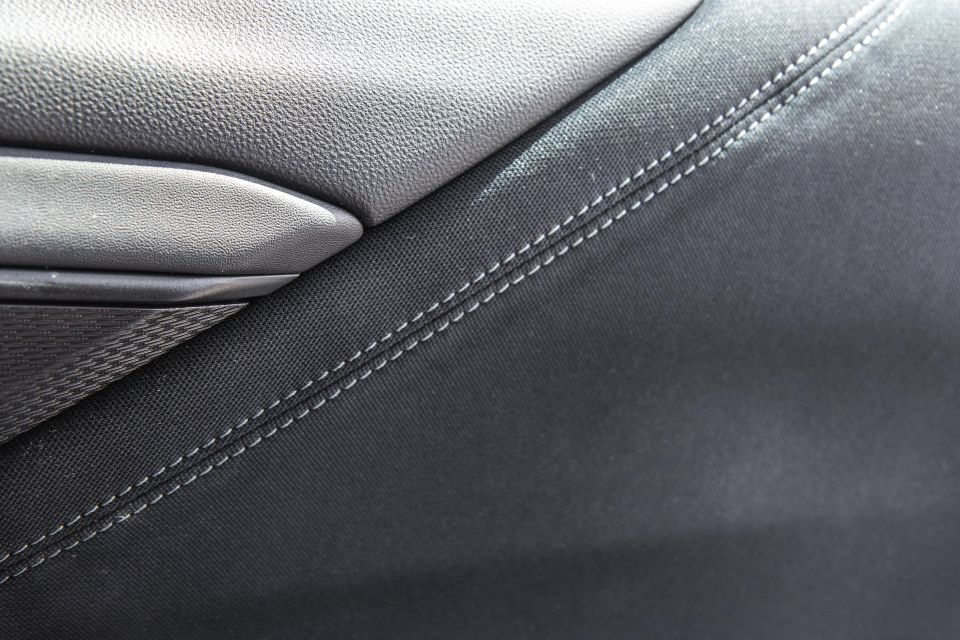
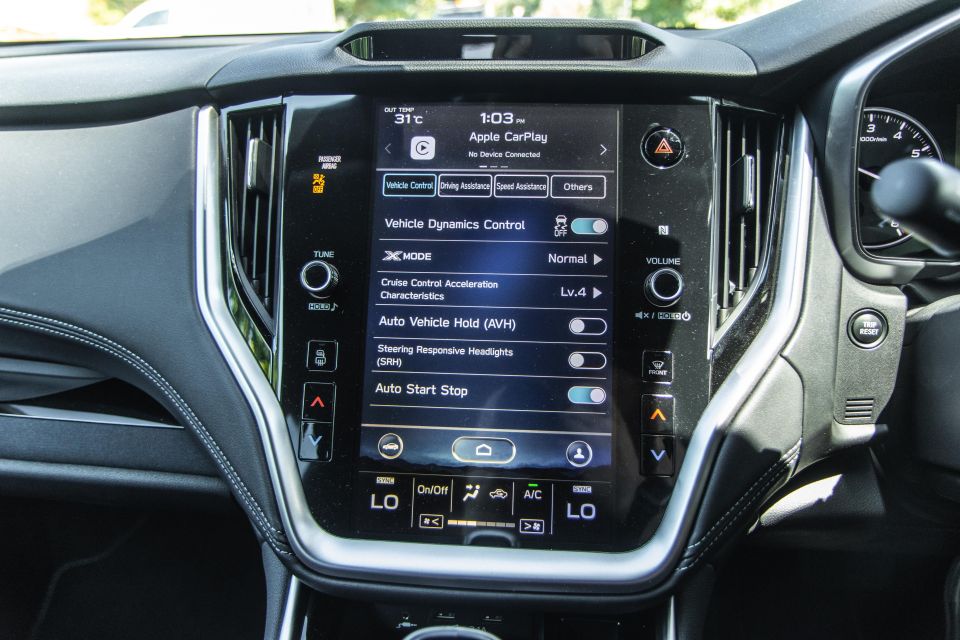
One side effect of the brasher display and cleaner dash layout is that some important controls are situated in touchscreen sub-menus rather than accessed by specific buttons. I’m talking about functions like start/stop, Auto Hold anti-creeping function, and traction modes.
It’s not left wanting for cabin storage, with good door bins, the usual array of cupholders (with a height adjuster pad thrown in) and closing storage cubbies, and a grippy open section above the glovebox. There’s a spot for your phone too, though not quite as big and handy as the Kia’s.
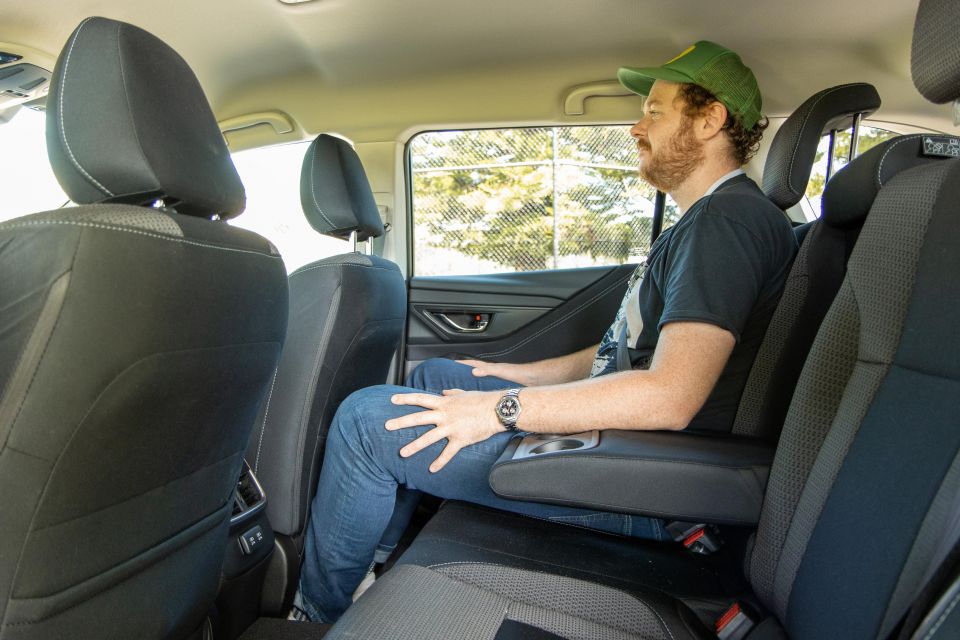
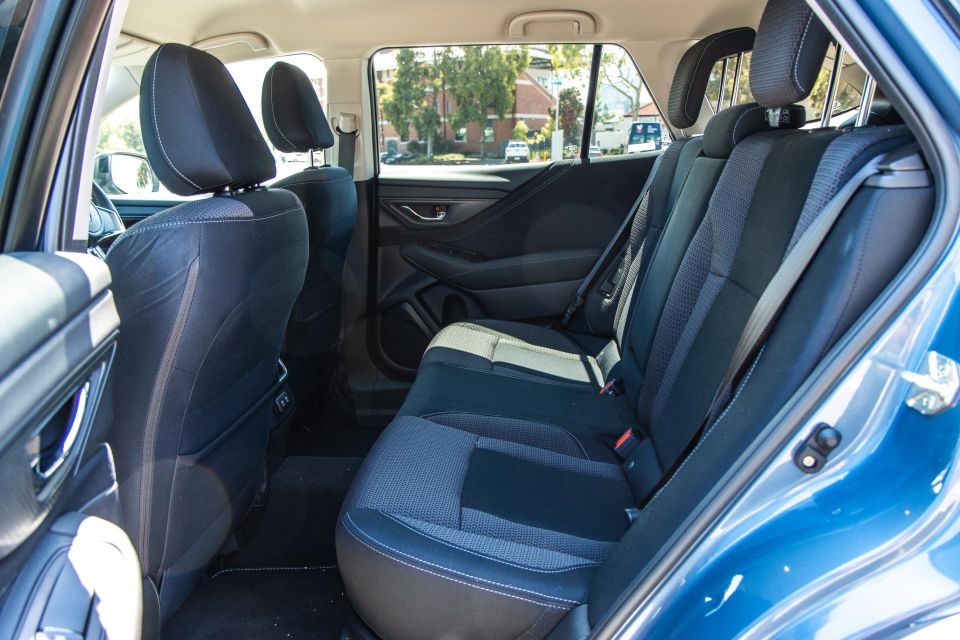
The back doors are nicely trimmed and rear occupants have vents, two USBs, cup-holders and armrests. There’s less foot room than in the Kia and it feels a little less ‘airy’, but again I had ample headroom and legroom. Zero complaints. The seats tilt but are fixed at the base.
The boot is a little pokier than the Kia’s and the tailgate lower, but it’s still capacious enough for the majority of families. As the pictures further down show it swallows two check-in suitcases with ease, with ample room to spare.
There’s a pull-out cargo blind that can be stored under the main load floor, 12V input (as with the Kia), small netted storage areas, bag hooks, and levers to flip down the back seats. The presence of a full-size spare wheel is once again a welcome reassurance.

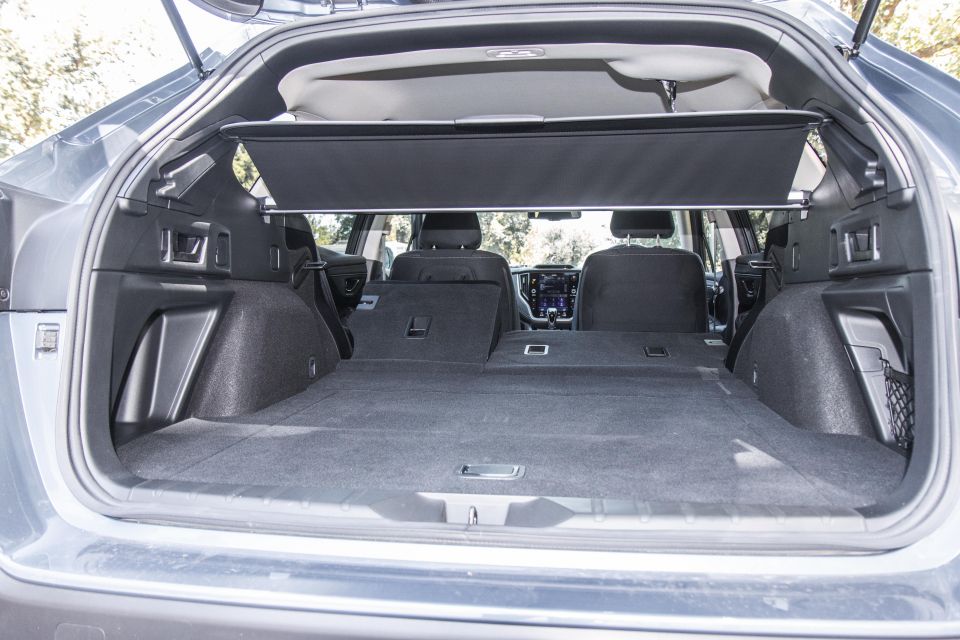
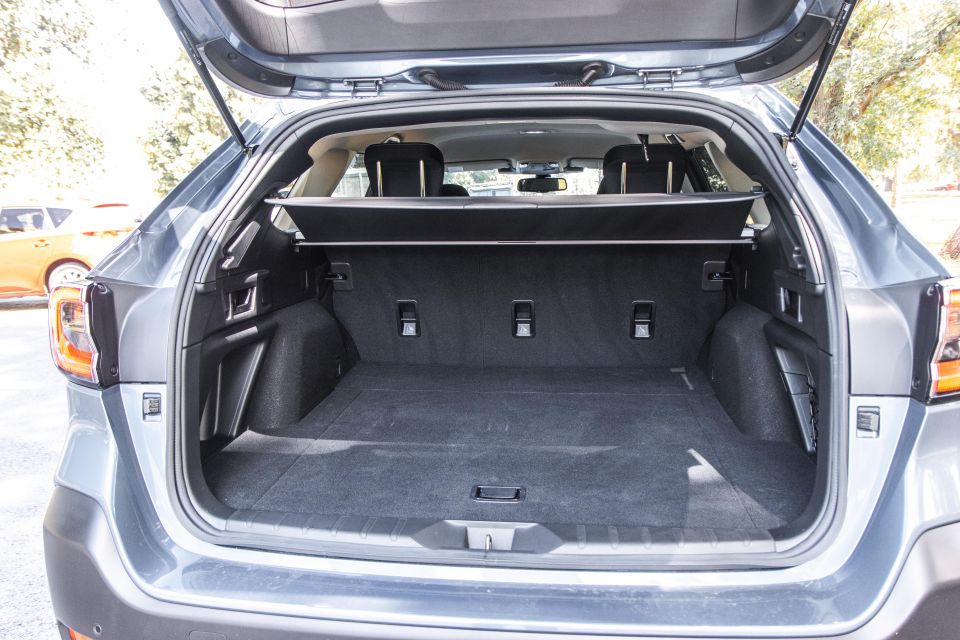
| Kia Sorento S | Subaru Outback AWD | |
|---|---|---|
| Length | 4810mm | 4870mm |
| Width | 1900mm | 1875mm |
| Height | 1700mm | 1675kg |
| Wheelbase | 2815mm | 2745mm |
| Boot capacity | 616L | 522L |
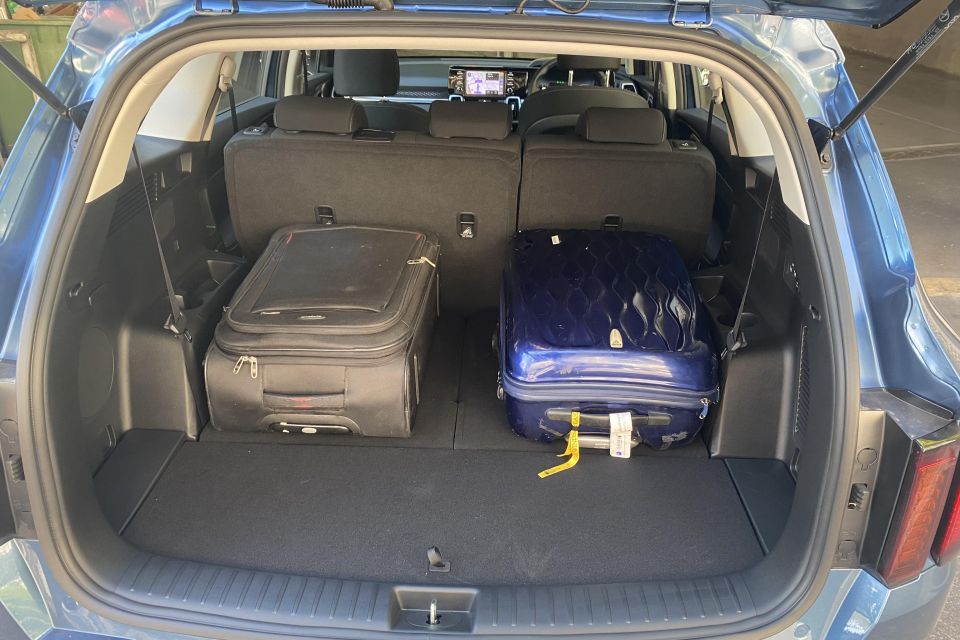
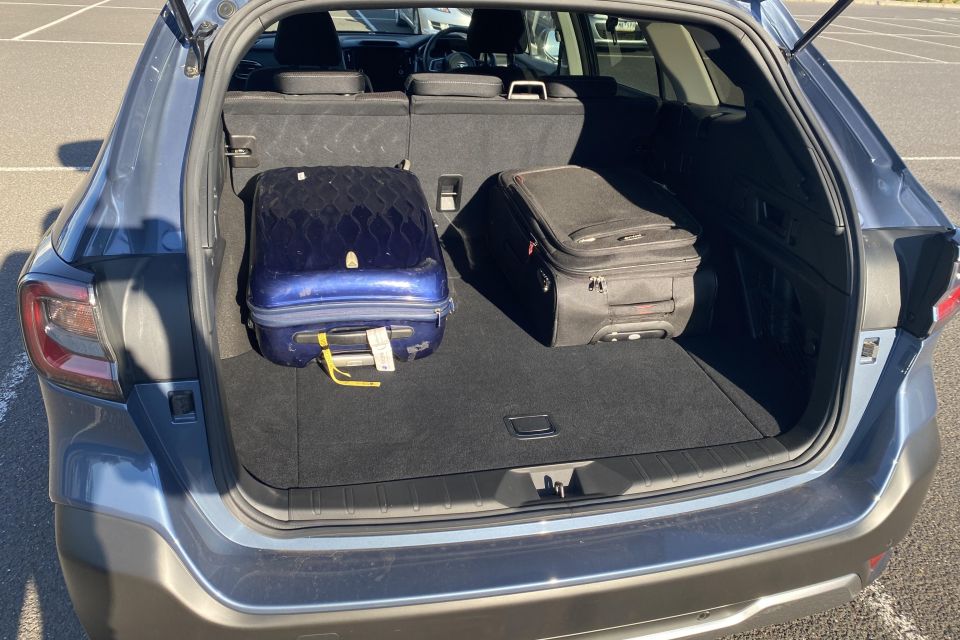
Do you prefer guts, or fuel economy?
The Kia’s 3.5-litre naturally aspirated petrol V6 makes a meaty 200kW of power along with 332Nm of torque, and is mated to an eight-speed auto and only front-wheel drive.
Even though it’s the heavier vehicle, it still has a power-to-weight advantage.
On the other hand, the Subaru’s 138kW and 245Nm 2.5-litre Boxer four-cylinder engine mated to a CVT offers appreciably better ADR combined-cycle fuel economy: 7.3 litres per 100km versus 9.7L/200km for the Kia.
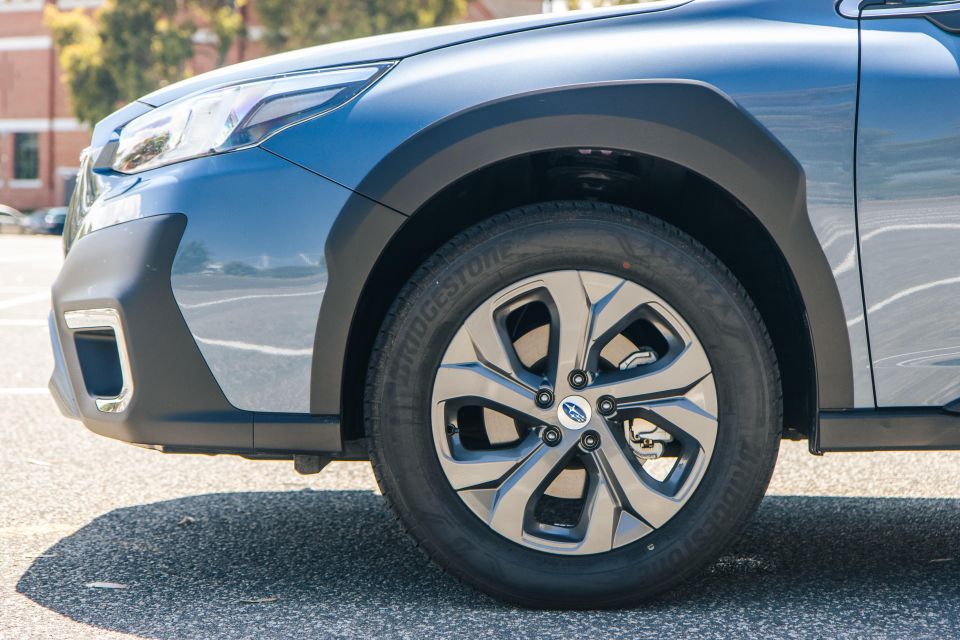
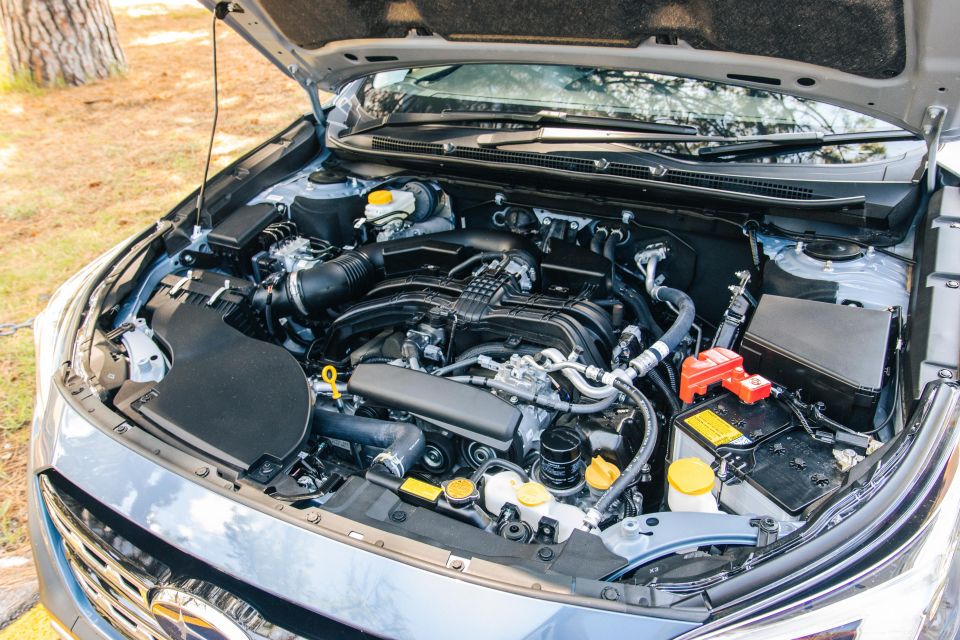
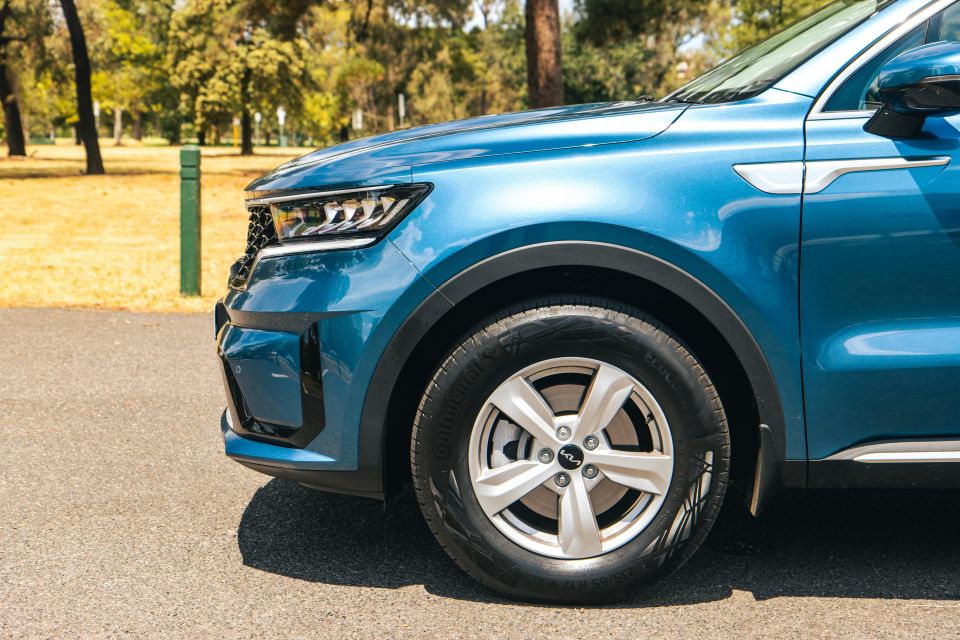
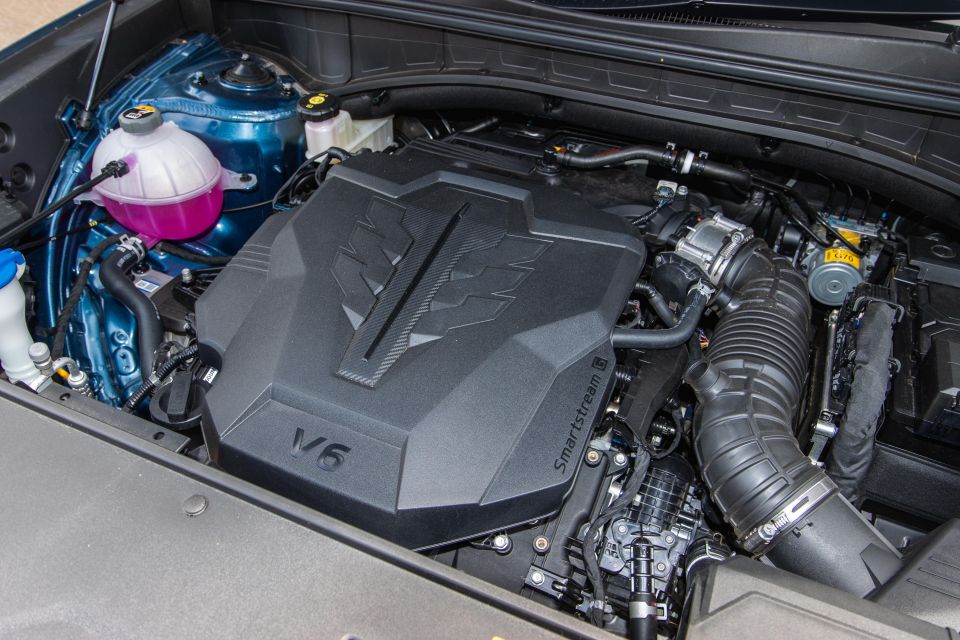
The Outback, being a Subaru, also has standard all-wheel drive. You can get AWD in the Kia but you need to spend a further $3000, and buy the diesel engine.
Both vehicles have 2000kg braked towing capacities, and while the Outback’s tank is 4L smaller it should offer a greater driving range.
We need to give credit to Kia for offering a meatier diesel option with AWD and a DCT automatic across all spec grades. Subaru’s decision to no longer offer any additional engines (for now) is disappointing. Fingers crossed this much-desired turbo comes.
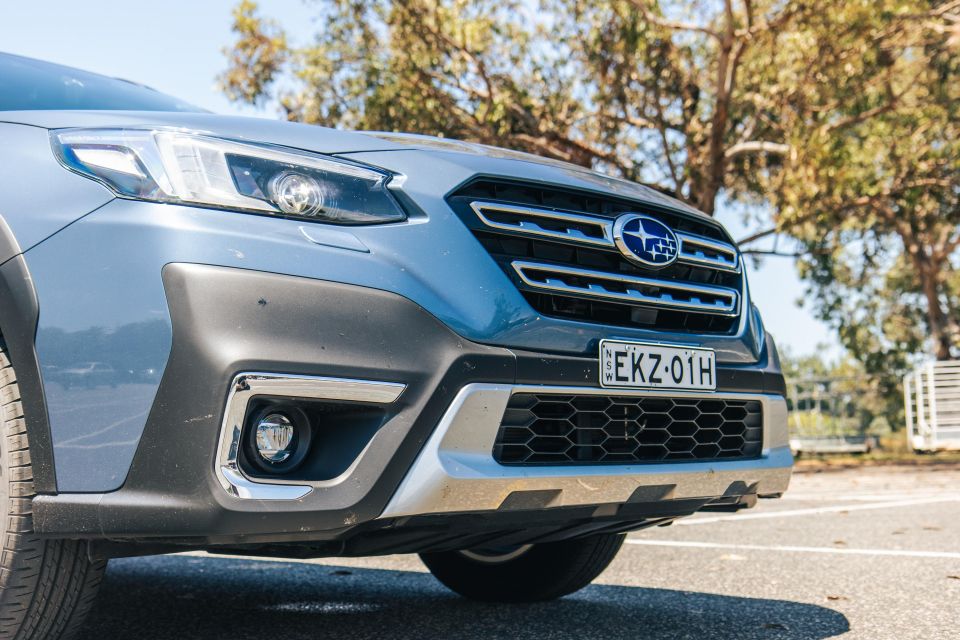
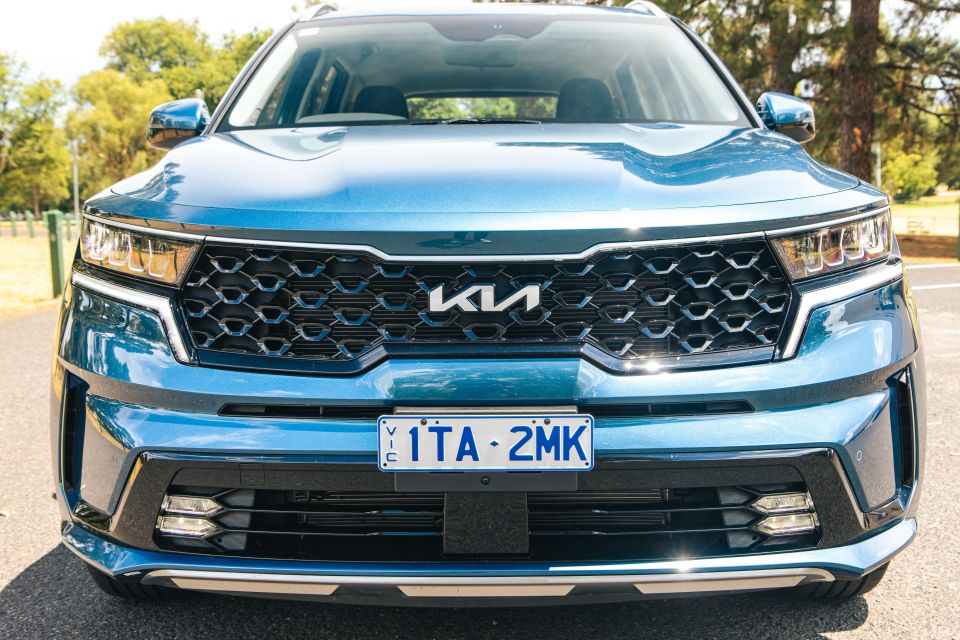
| Kia Sorento S | Subaru Outback AWD | |
|---|---|---|
| Engine | 3.5-litre V6 petrol | 2.5-litre flat four petrol |
| Power | 200kW @ 6300rpm | 138kW @ 5800rpm |
| Torque | 332Nm @ 5000rpm | 245Nm @ 3400rpm-4600rpm |
| Power-to-weight | 109kW/tonne | 84.9kW/tonne |
| Transmission | 8-speed auto | CVT |
| Driveline | Front-wheel drive | All-wheel drive |
| Fuel consumption | 9.7L/100km | 7.3L/100km |
| Fuel tank | 67 litres | 63 litres |
| Towing capacity | 2000kg | 2000kg |
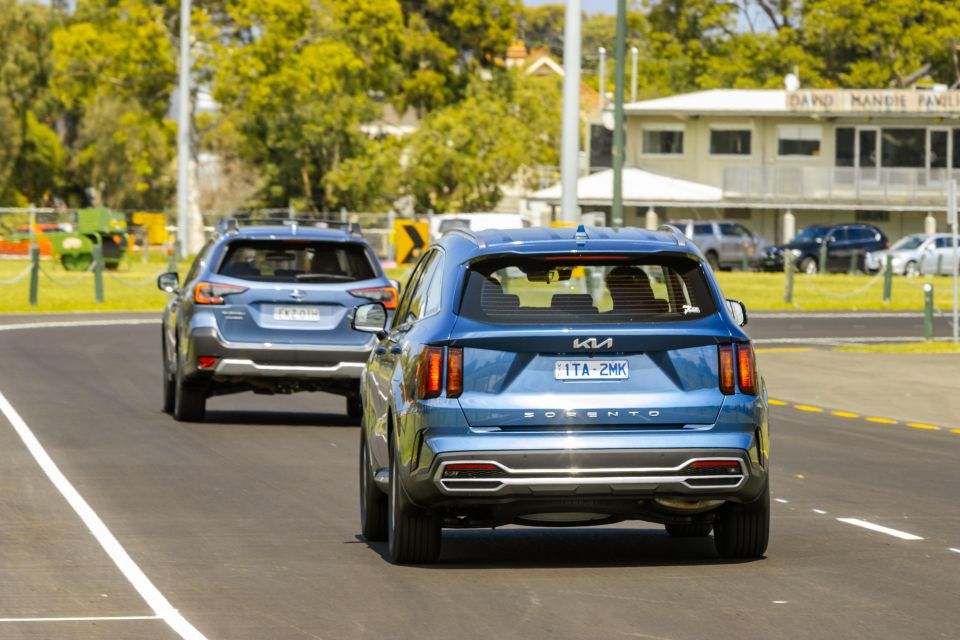
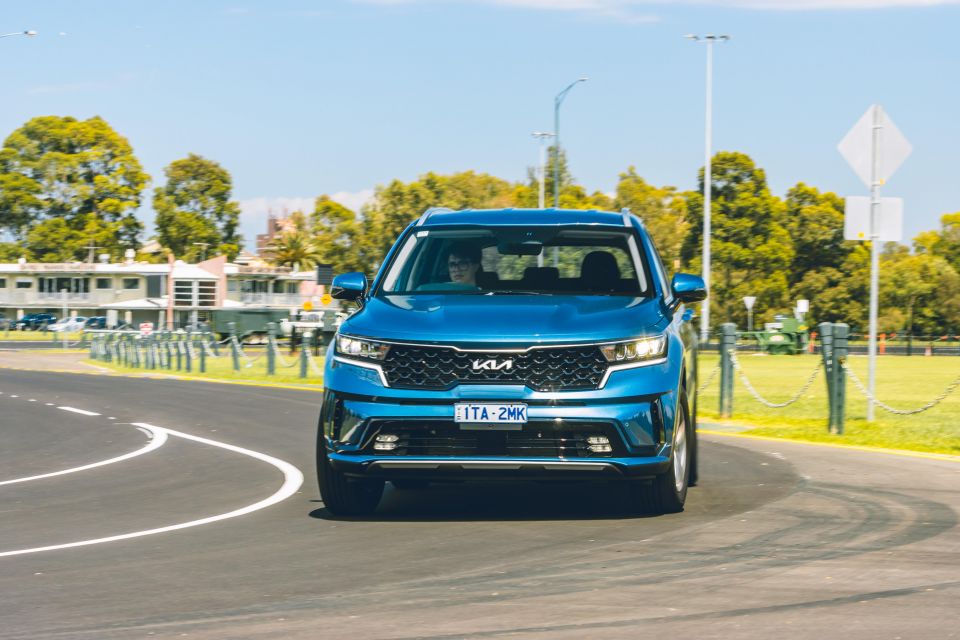
Kia
The Kia certainly offers quicker acceleration, though occasionally all this torque overcomes the front wheels and causes the car to chip off the mark. This is especially true in the wet, although the traction control is relatively subtle in its application.
You can get down to around 8.0 seconds to 100km/h giving it a real boot-full, and when you do the engine sounds satisfying gruff. Like most naturally aspirated petrol engines it really kicks into gear (figuratively) higher in the rev band, with peak power reached at 6300rpm.
It’s mated to an eight-speed automatic transmission that felt smooth and near-seamless.
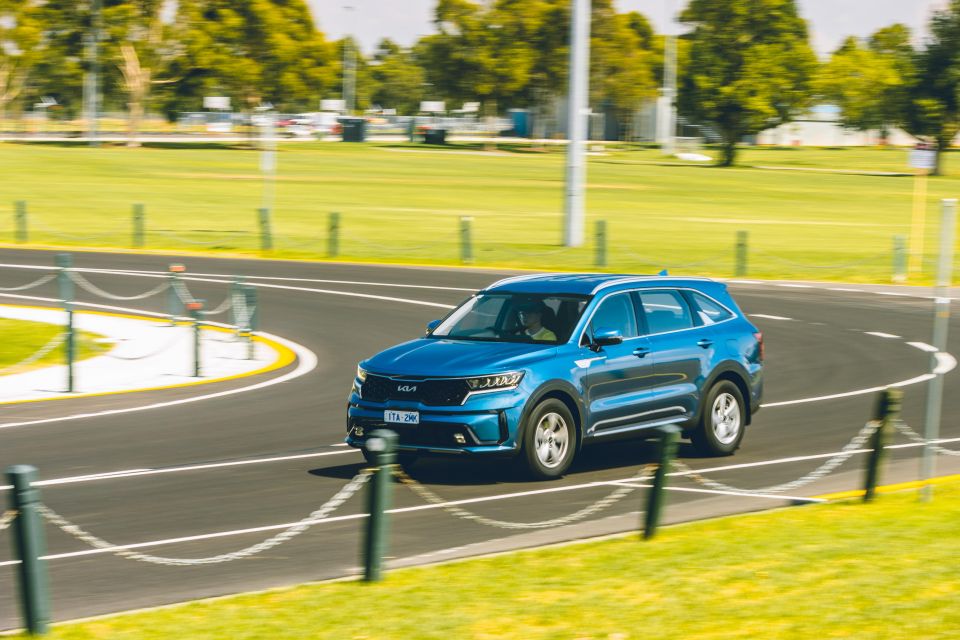


For those who want a more effortless, efficient and soft-road capable vehicle, the more expensive diesel is there. The positive trade-off of the petrol is its engaging manner, and greater refinement – principally at idle. There’s a Sorento hybrid coming, but it’ll be supply-constrained.
The V6’s ADR combined-cycle fuel efficiency of 9.7L/100km on a combined loop, but this escalates to 13.7L/100km in urban stop/start driving which is often the most common use for a front-drive SUV. The lack of an idle-stop system doesn’t help.
I averaged 11.2L/100km overall, which isn’t exactly frugal – especially at current fuel prices. At least it runs on cheap(er) 91 RON.
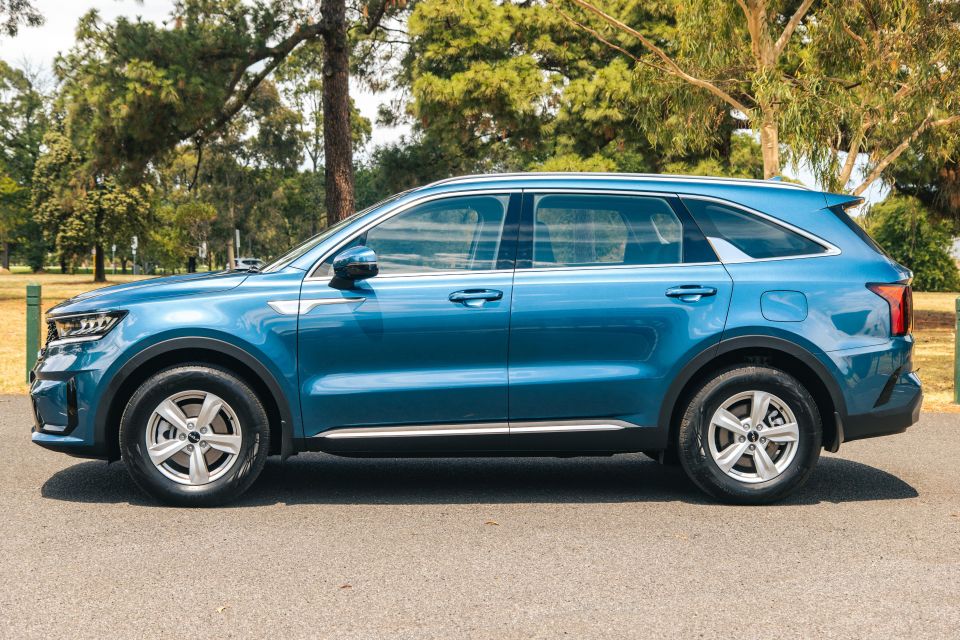
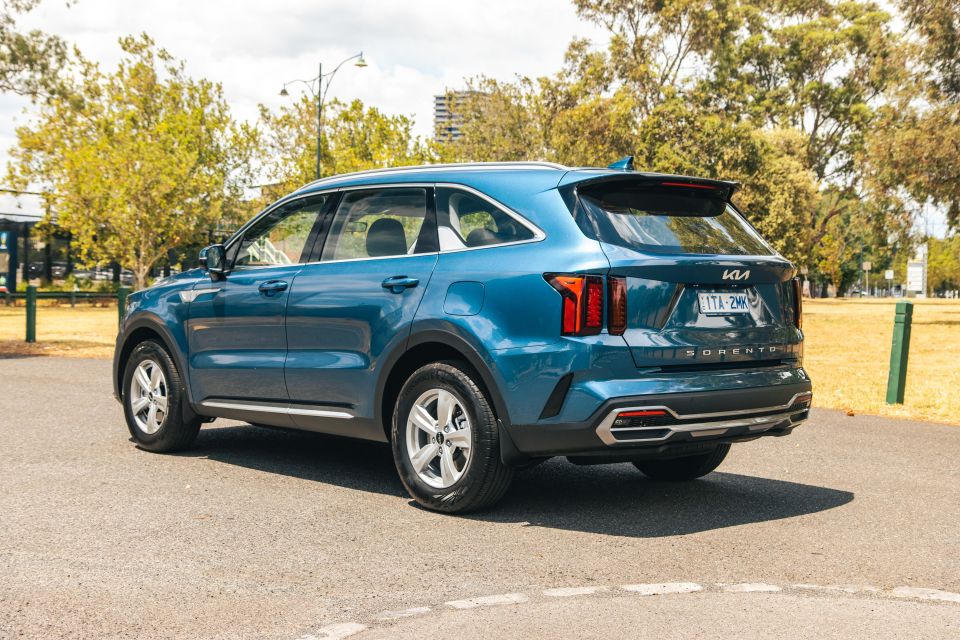
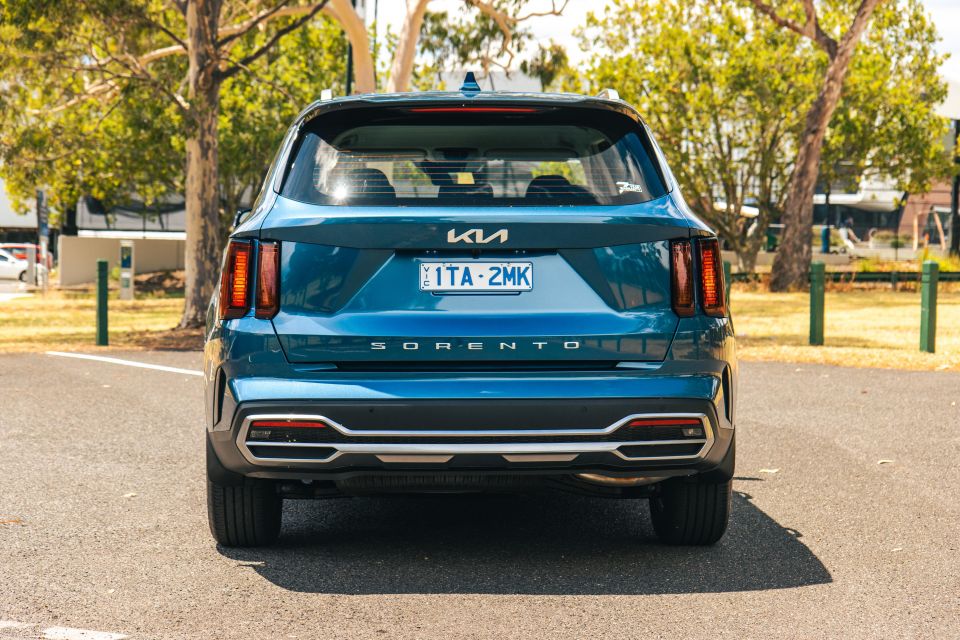
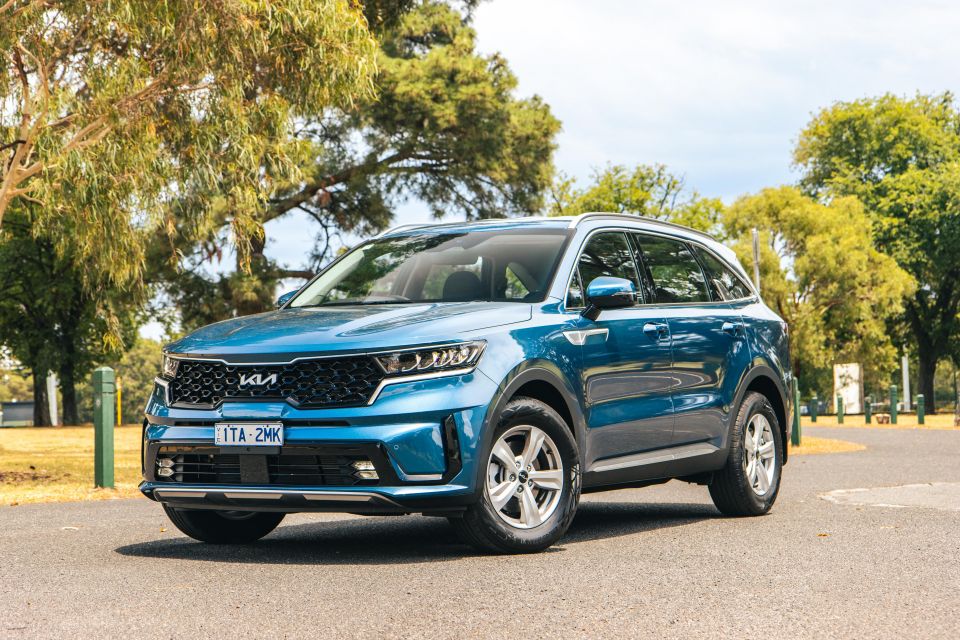
In terms of driving dynamics the Sorento is exactly what you want it to be: the new Hyundai-Kia platform offers a stiff base, and there’s excellent noise suppression and ride comfort. The smaller wheels mean more cushy tyre sidewall, and the springs and passive dampers maximise body control without removing the car’s ability to float over most corrugations nicely.
There are various driving modes that can change the throttle response mildly, as well as the steering resistance, but I just left the car in Smart mode, whereby the onboard computers decide which setup is most called-for at a given moment.
Of course, being FWD there’ll be few adventures off the beaten tarmac or gravel paths, which is where the Subaru with its standard all-wheel drive and extra clearance starts to look pleasingly versatile.
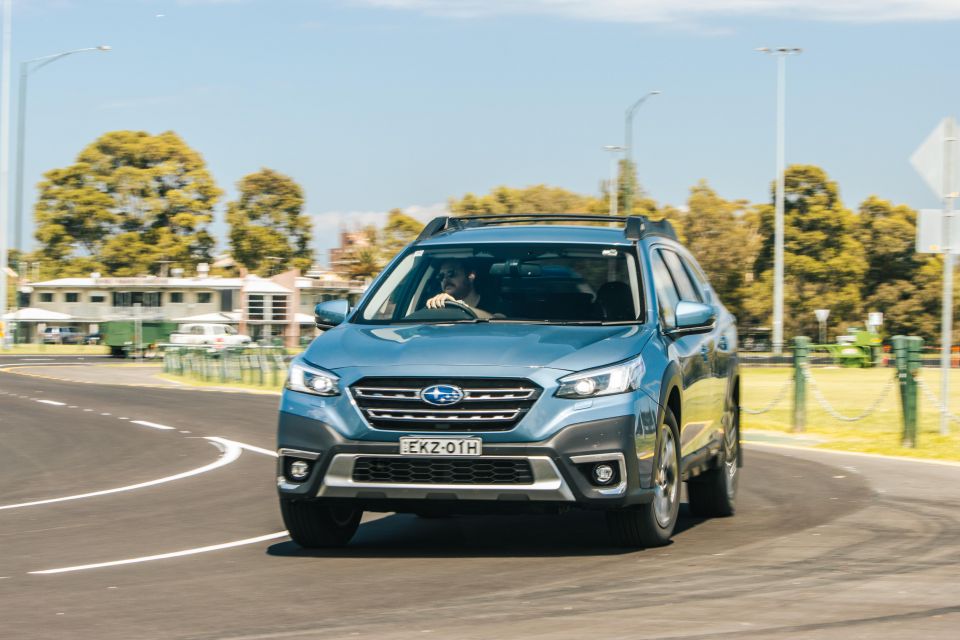

Subaru
Subaru makes exciting engines, but the Outback’s 2.5-litre naturally aspirated and horizontally opposed four isn’t one of them – even in its sharpest throttle and transmission mode, as accessed by a button on the wheel.
The engine’s core characteristics, enhanced by a CVT with fuel efficiency-minded tune, mean the Outback feels a little lax off the mark when you really sink your right foot. There’s definitely some shove there, it’s just that you only feel the surge north of about 3000rpm.
You’ll keep up with everyone, and the engine is certainly quiet and refined, but it won’t blow you away. You can engage the paddles and cycle through eight set gears for a little more engagement, but it always feels like a slightly slurry CVT.
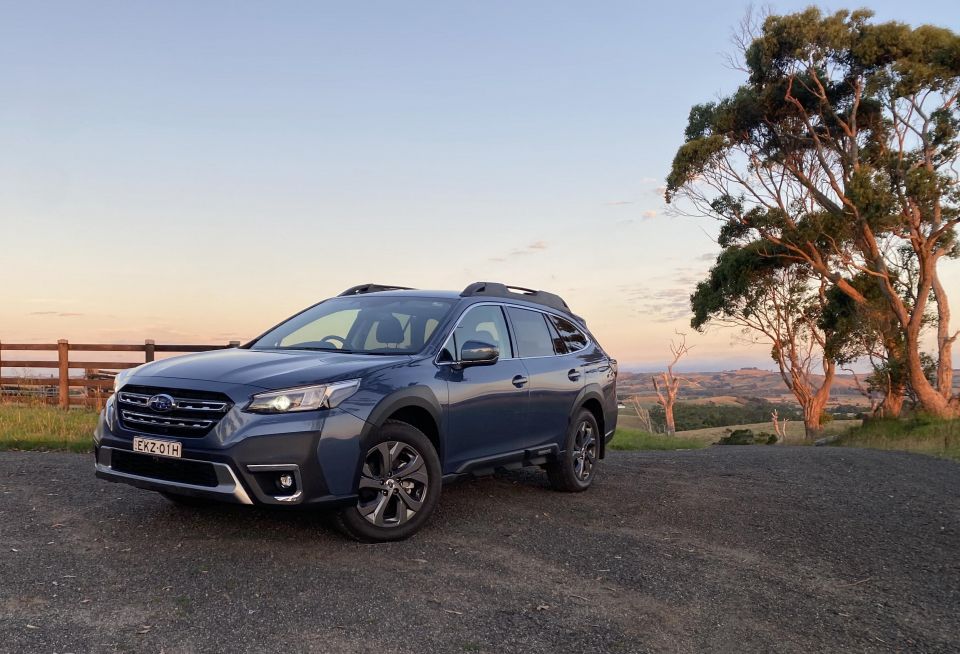

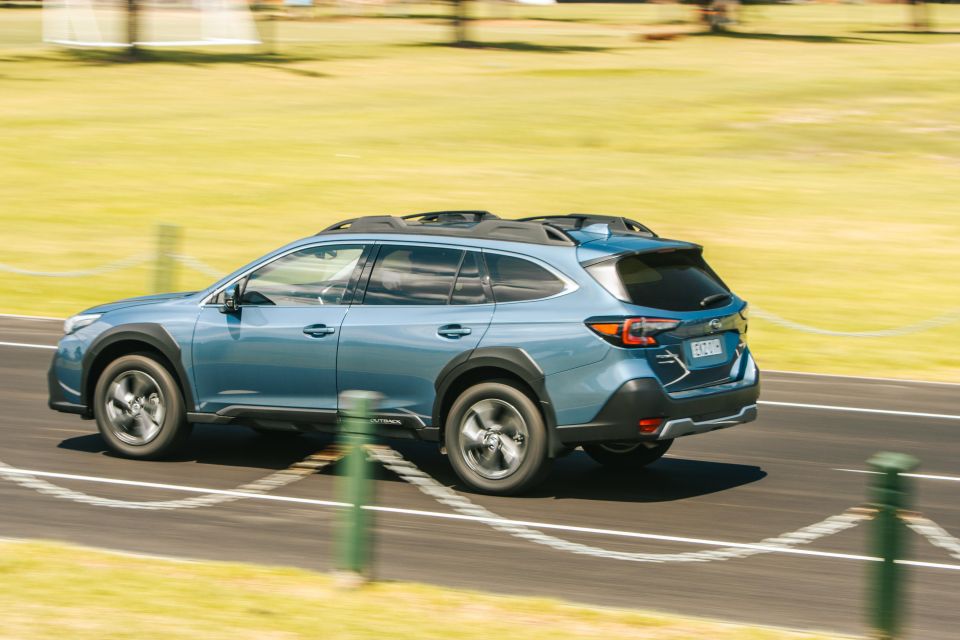
It’s far better on fuel than the Kia though, making up for its comparative slowness. The claim is 7.3L/100km on a combined loop and 9.3L/100km in urban driving, with my average sitting at 8.0L/100km. On a highway drive at maximum efficiency you should nudge 1000km per tank.
The Outback matches its chunky looks and ingenious travel bars with full-time AWD, with various traction modes that control the drive force distributed to each wheel, and can reduce wheel slippage front and rear. There’s also an additional 37mm of ground clearance.
If you want to hit some trails or regularly do snow trips, the Outback offers added versatility at base level.
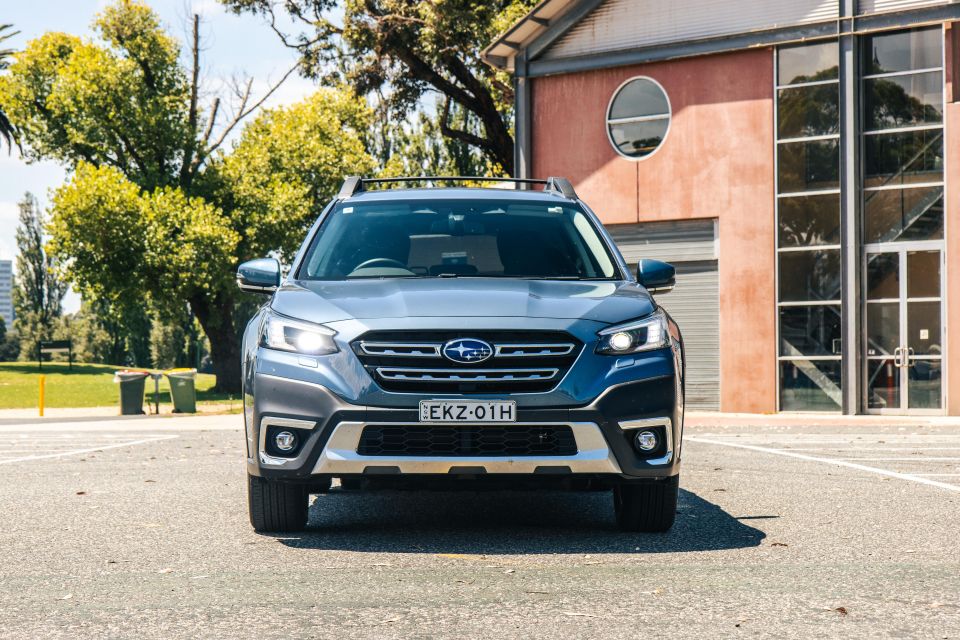
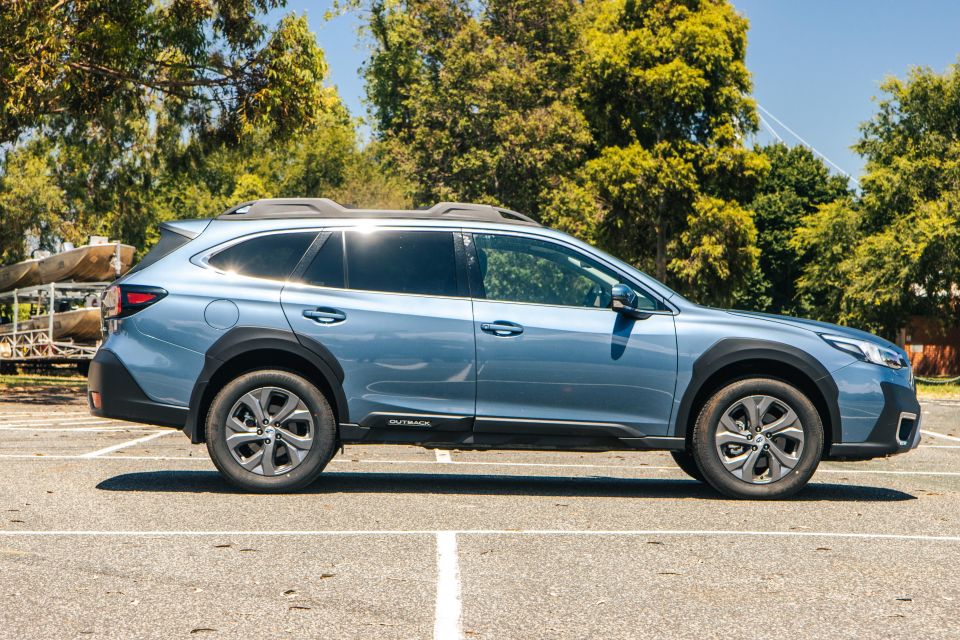
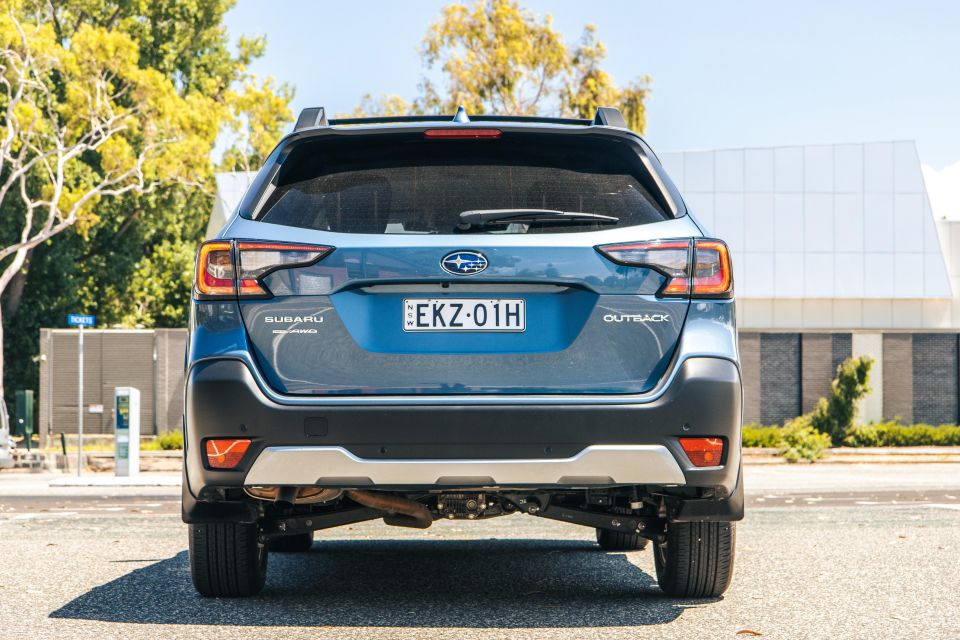
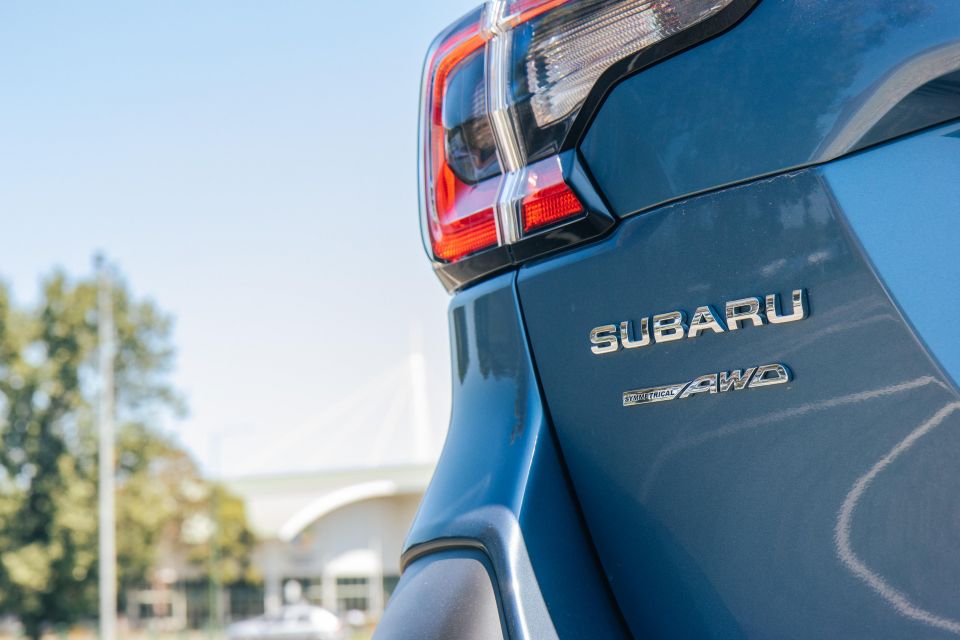
It’s not quite as good at filtering out tyre roar at speed as the Kia, nor do you sit up in quite so commanding a fashion, but it’s more than 200kg lighter and a smidgen lower, and through corners it feels it. It’s car-like, but can clamber over kerbs and climb slippery hills.
Light electric steering and excellent suspension tune that filters out most harshness from impact while retaining good handling against cornering forces both impressed, and its 60cm tighter turning circle is worth noting.
| Kia Sorento S | Subaru Outback AWD | |
|---|---|---|
| Front suspension | McPherson strut | McPherson strut |
| Rear suspension | Multi-link | Double wishbone |
| Front brakes | Ventilated disc | Ventilated disc |
| Rear brakes | Ventilated disc | Ventilated disc |
| Steering type | EPAS | EPAS |
| Turning circle | 11.6m | 11.0m |
| Ground clearance | 176mm | 213mm |
| Weight | 1835kg | 1626kg |
| GVM | 2560kg | 2200kg |
| Tyres | 235/65 R17 Continental | 225/60 R18 Bridegstone |

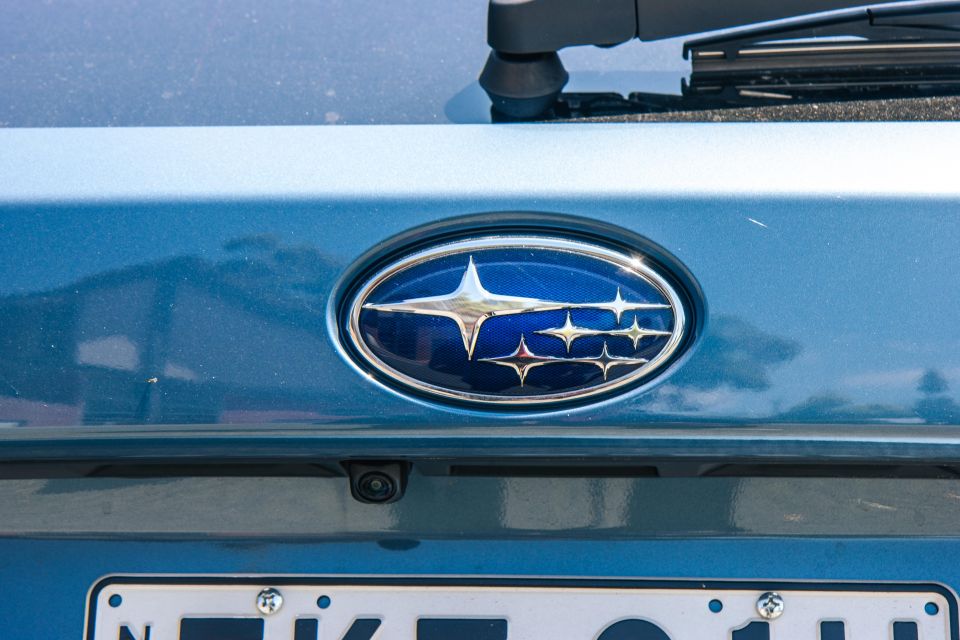
Kia’s seven-year and unlimited kilometre warranty edges Subaru’s five-year plan.
Service intervals for the Kia are either annual or 15,000km, with the first seven dealer visits price-capped at $3449, averaging out to $492.71 per visit.
Subaru offers a five-year or unlimited distance warranty.
The Outback’s service intervals are a shorter 12,500km or annual, with the first five visits costing $2449.88, equal to an average of $489.97 a pop.
So while the pricing is about identical, the Kia takes the edge by offering a longer capped-price plan and for having longer distance intervals between visits.
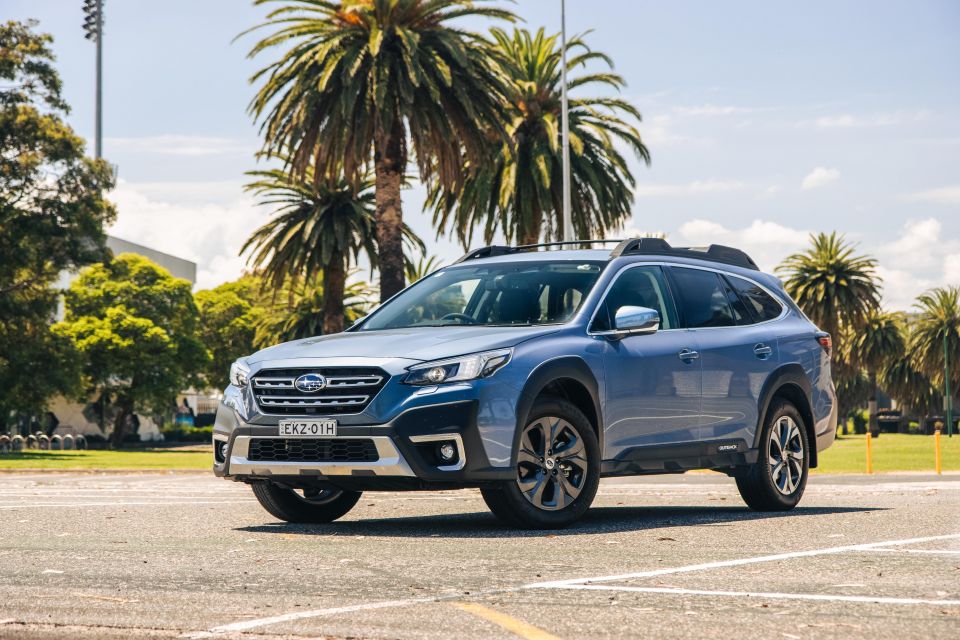
If you need the useful third seating row, want some proper engine grunt and don’t mind a higher fuel bill, and prefer the higher-riding ‘proper’ SUV look and feel, then the Sorento remains one of the very best large SUVs you can buy.
However I think there’s every chance that for many people, the more affordable Outback will actually serve their needs at least as well if not better, and offer a more car-like yet soft-road capable driving character to boot.
The Subaru is one of the top-selling vehicles in the segment for good reason, in that it straddles the line between a conventional family wagon and a big SUV. It fills a gap in the market especially well, as I hope this quick side-by-side demonstrated.
Keen to see more? We’ve done Kia Sorento and Subaru Outback videos, using different specification grades with extra spec.
Share your thoughts with us in the comments below!
Share your thoughts and write a review of a car you own and get featured on CarExpert.


Max Davies
3 Hours Ago


William Stopford
19 Hours Ago


Ben Zachariah
20 Hours Ago


Derek Fung
20 Hours Ago


Matt Campbell
1 Day Ago


William Stopford
2 Days Ago